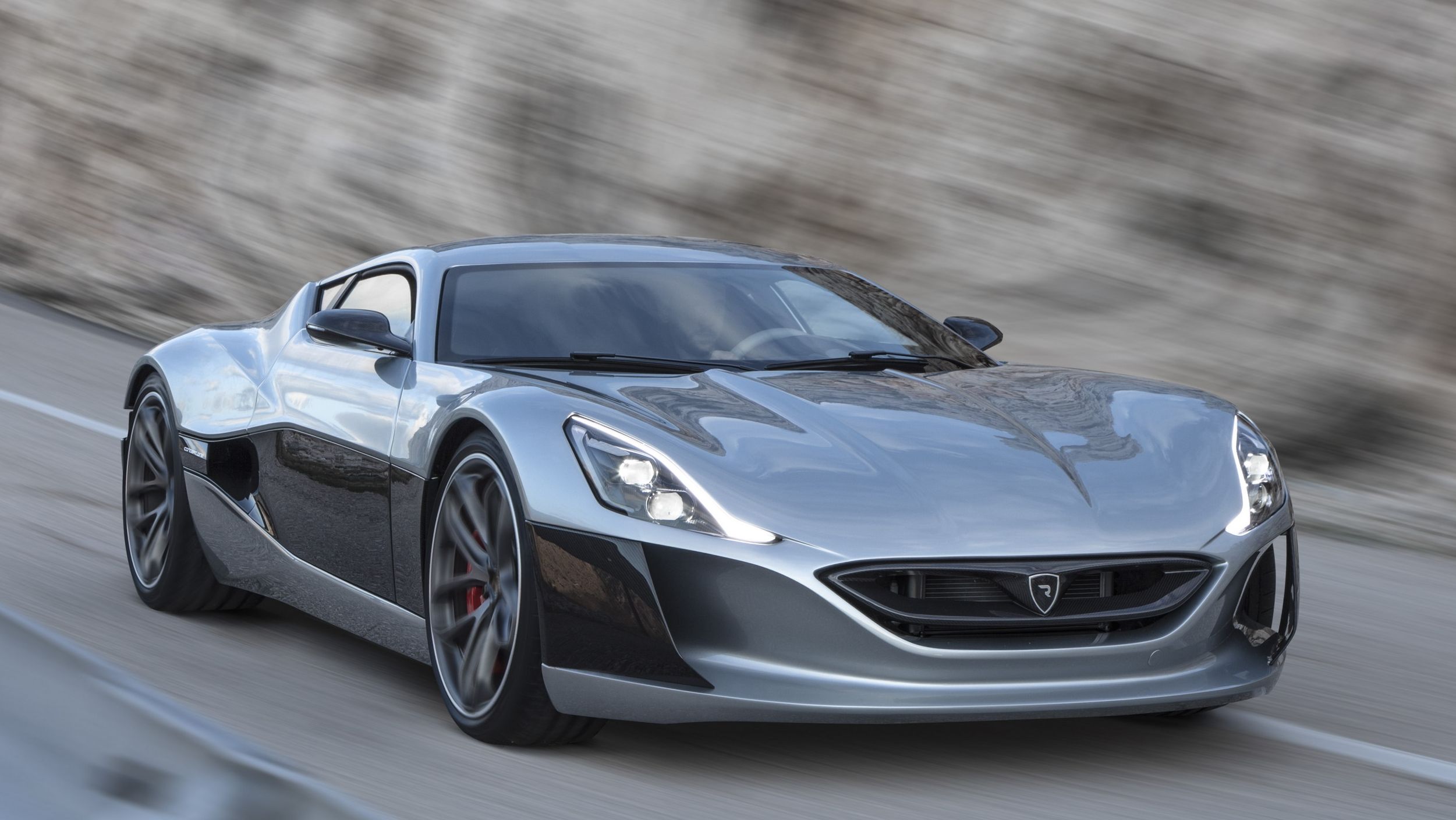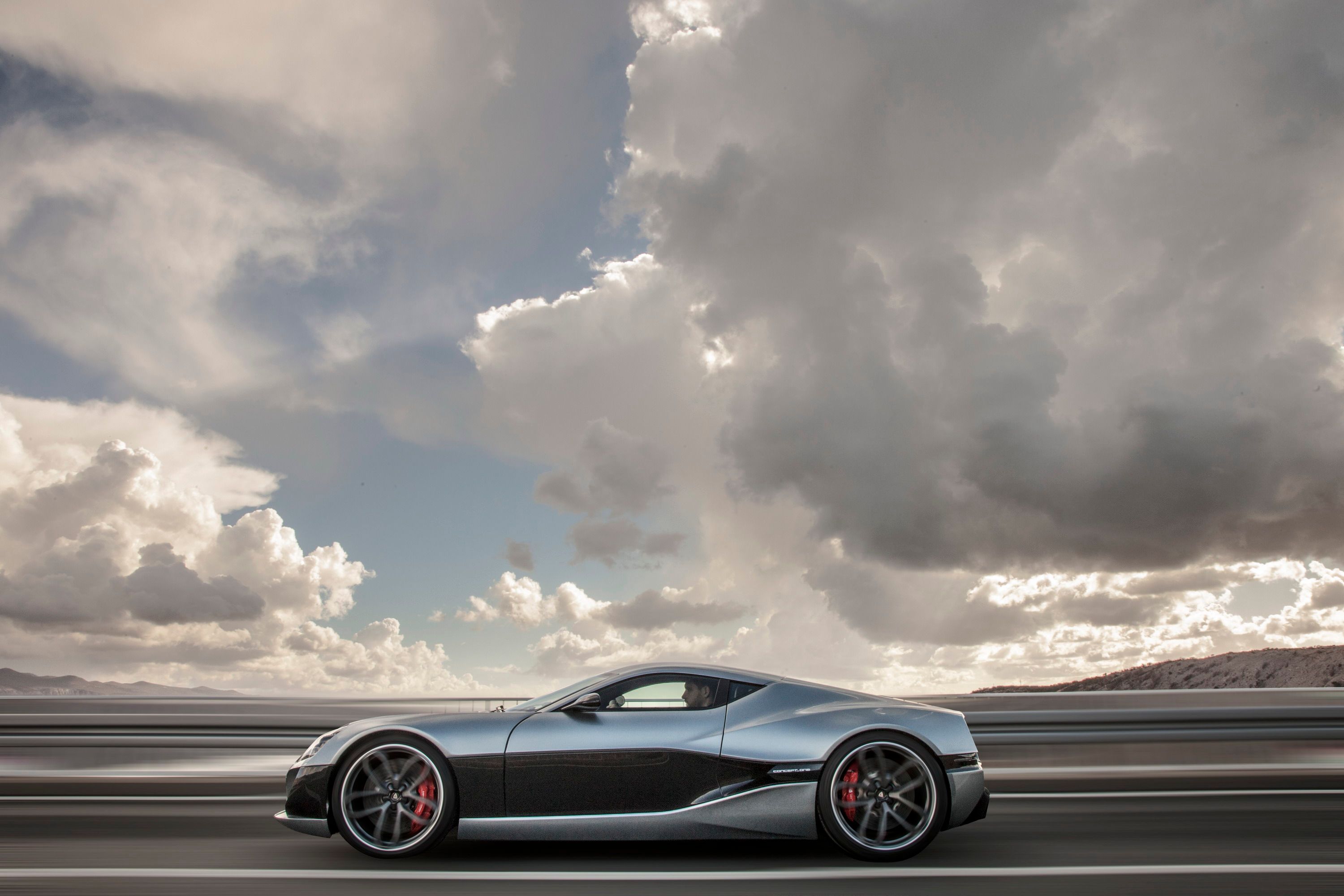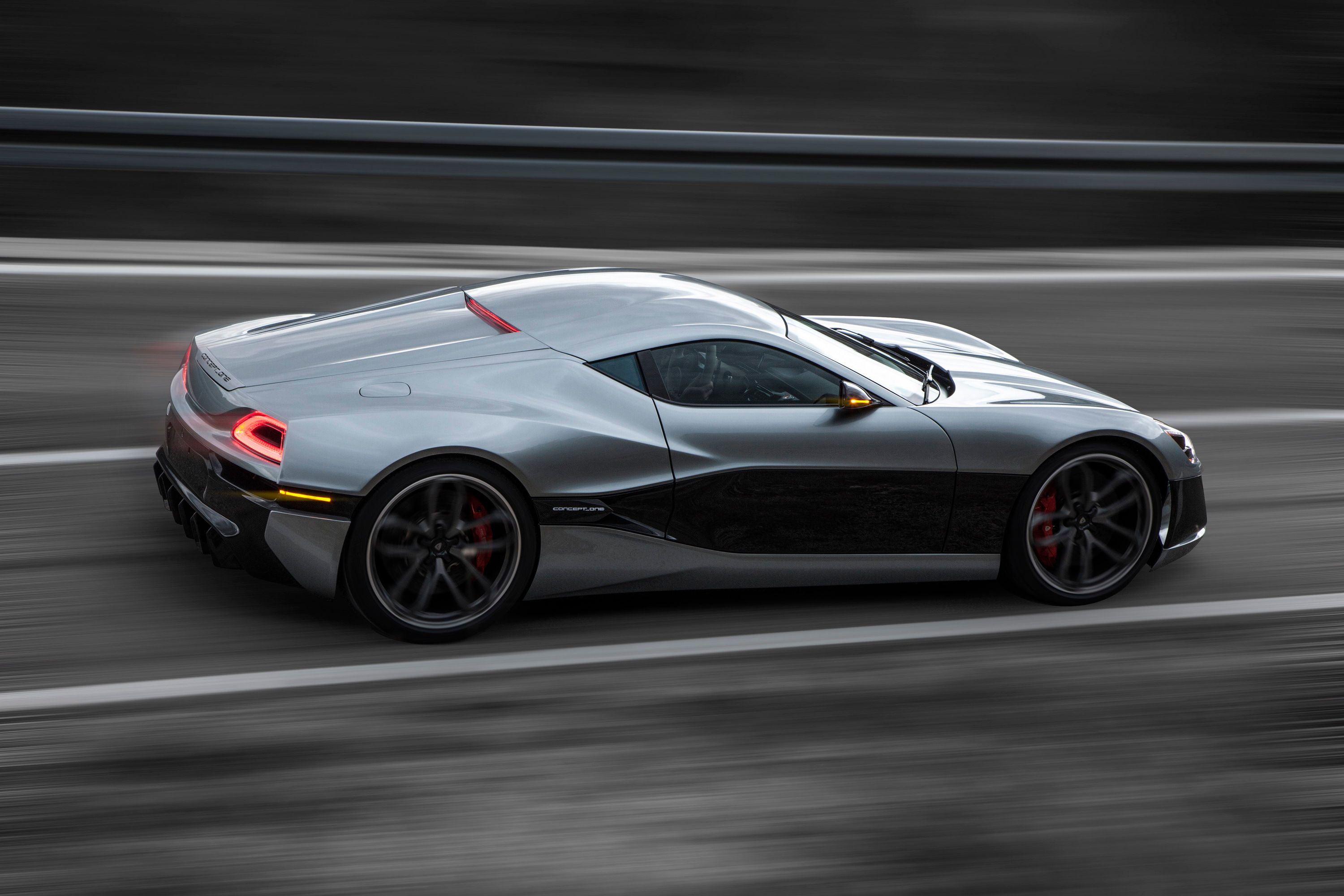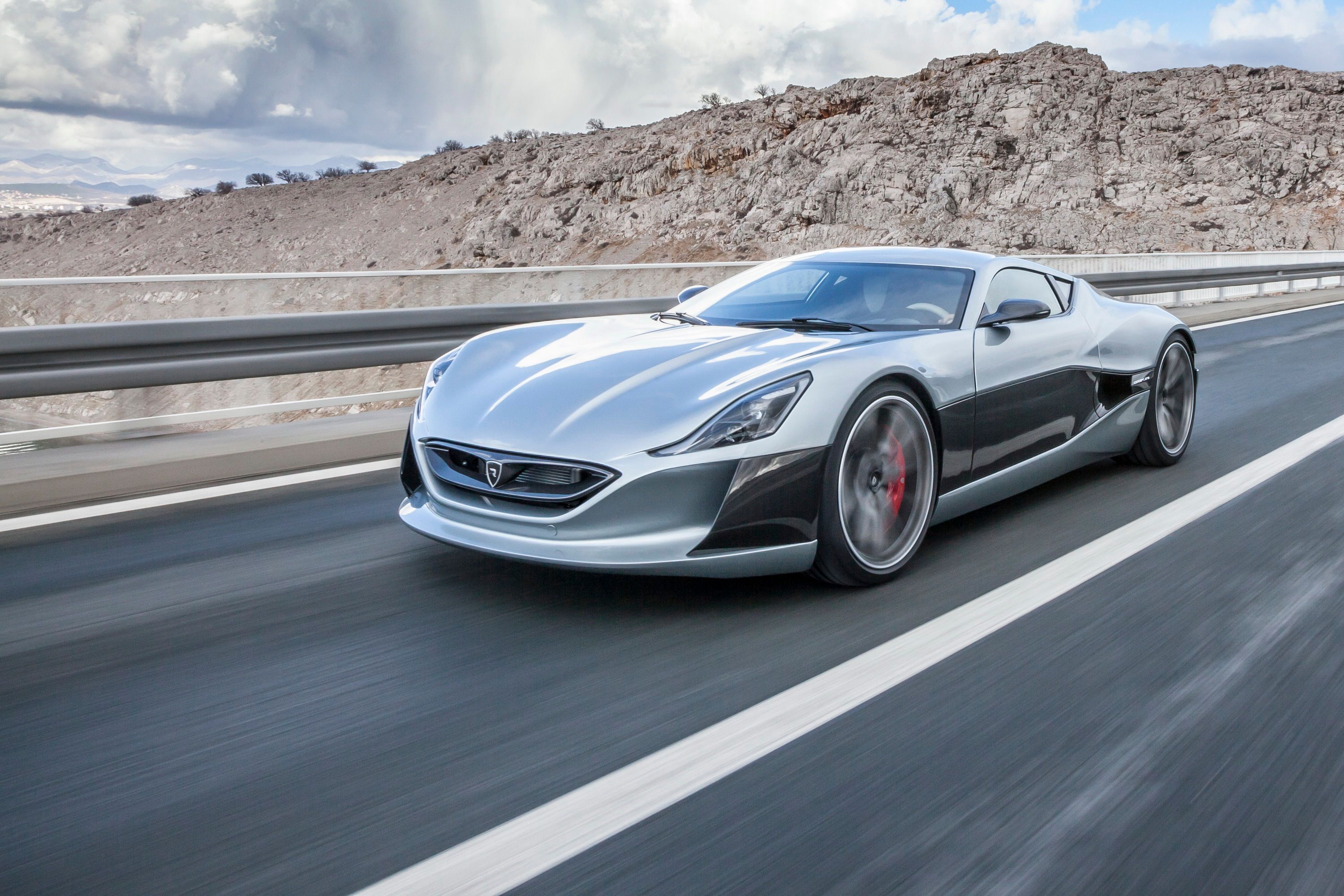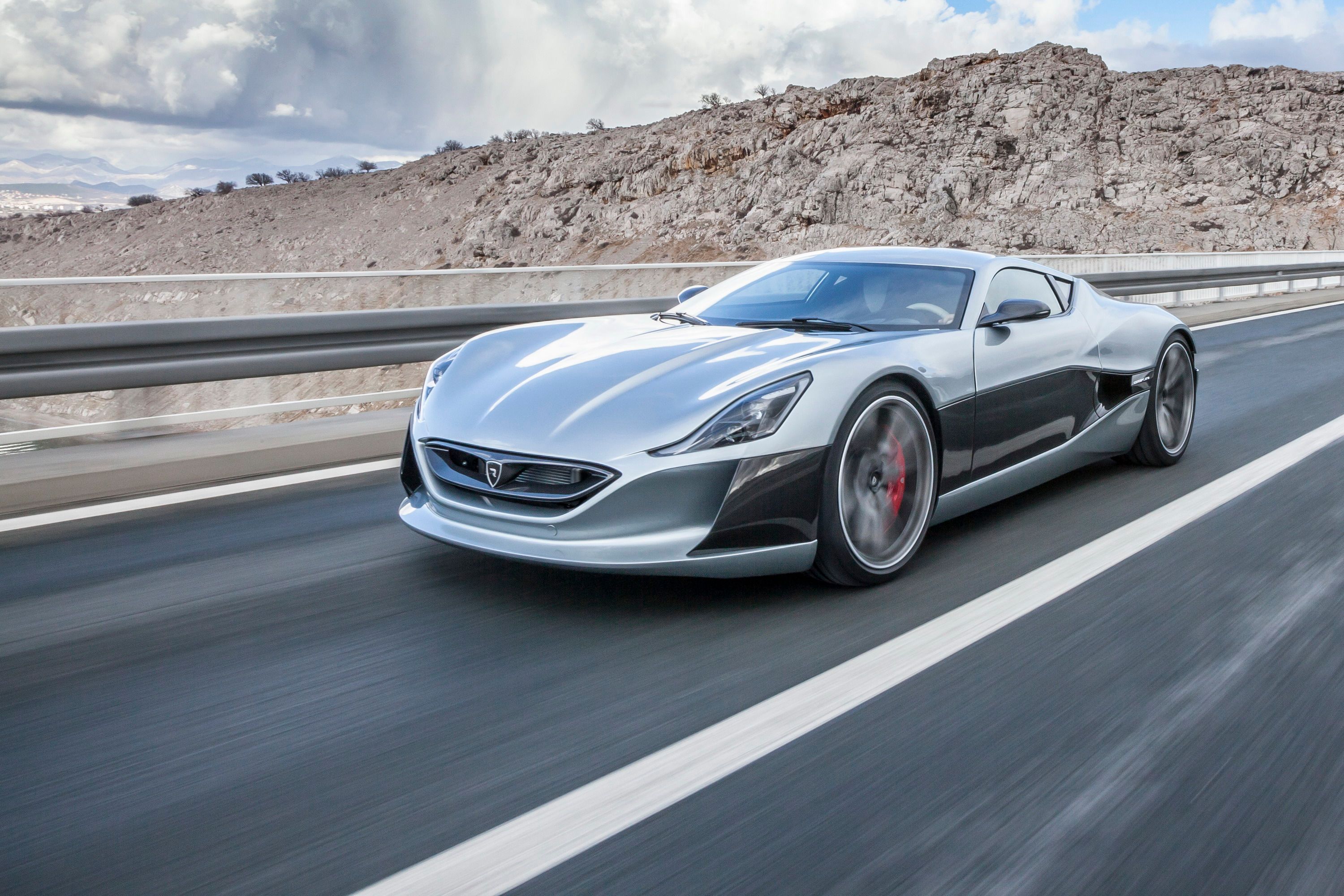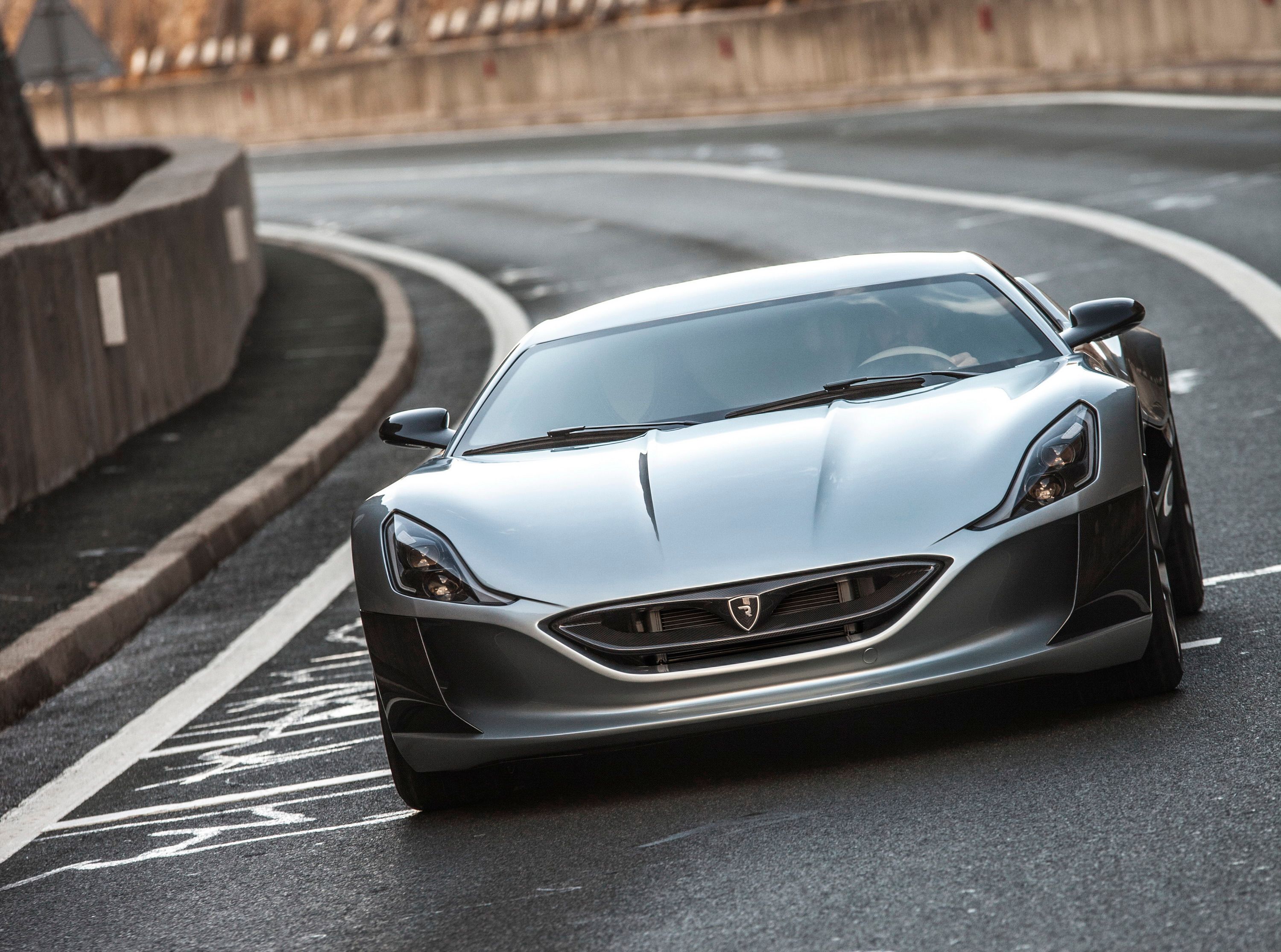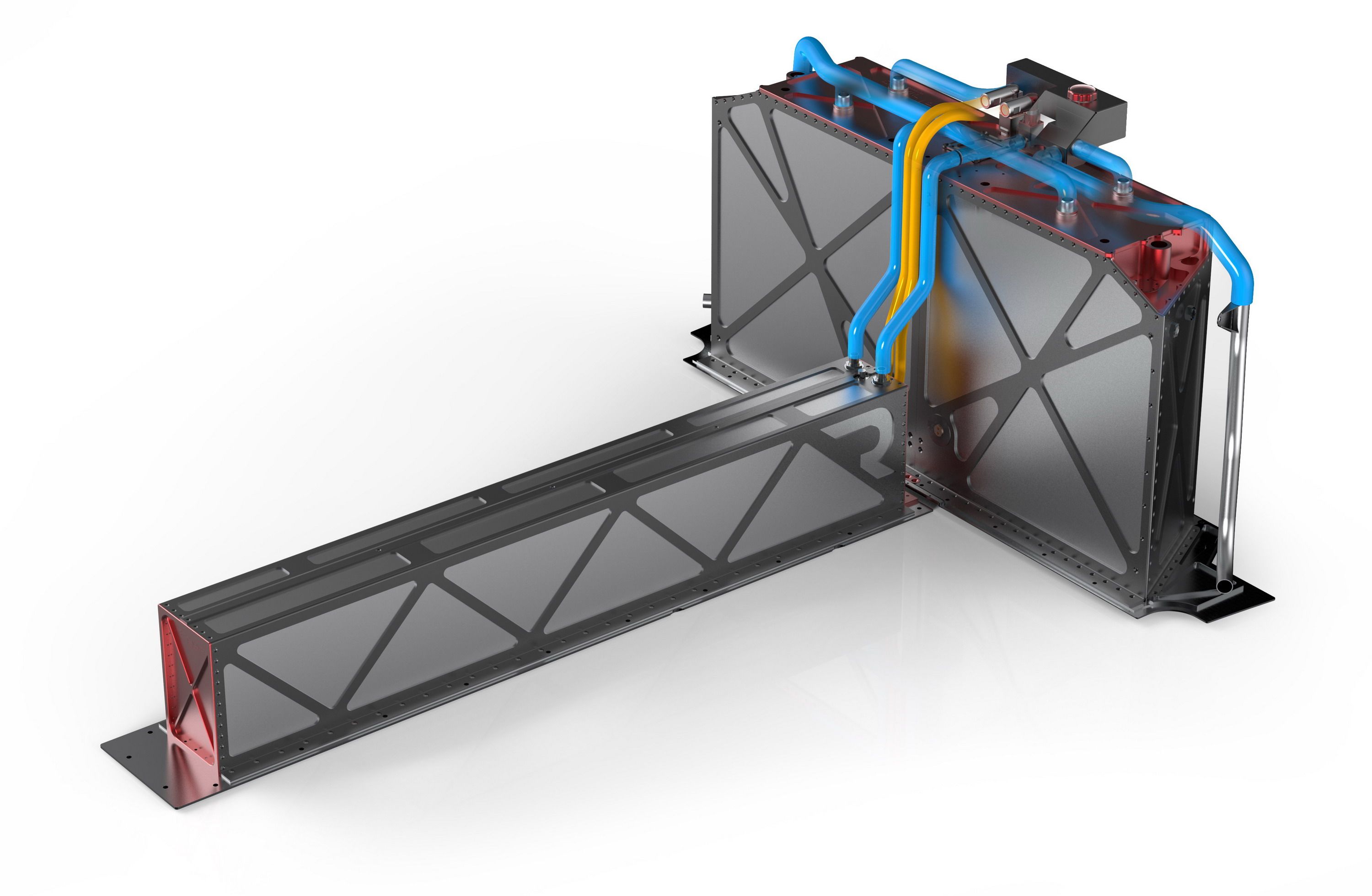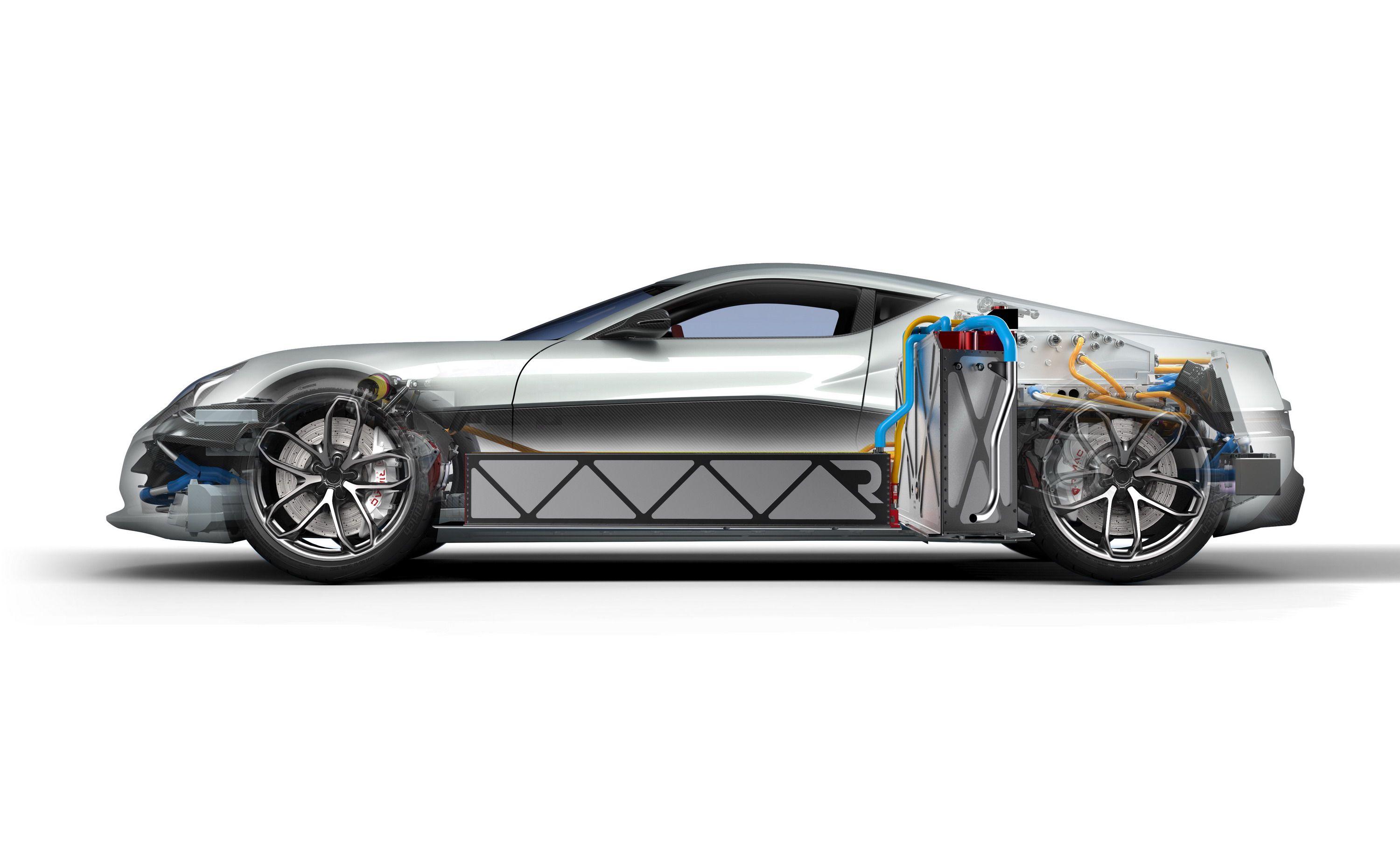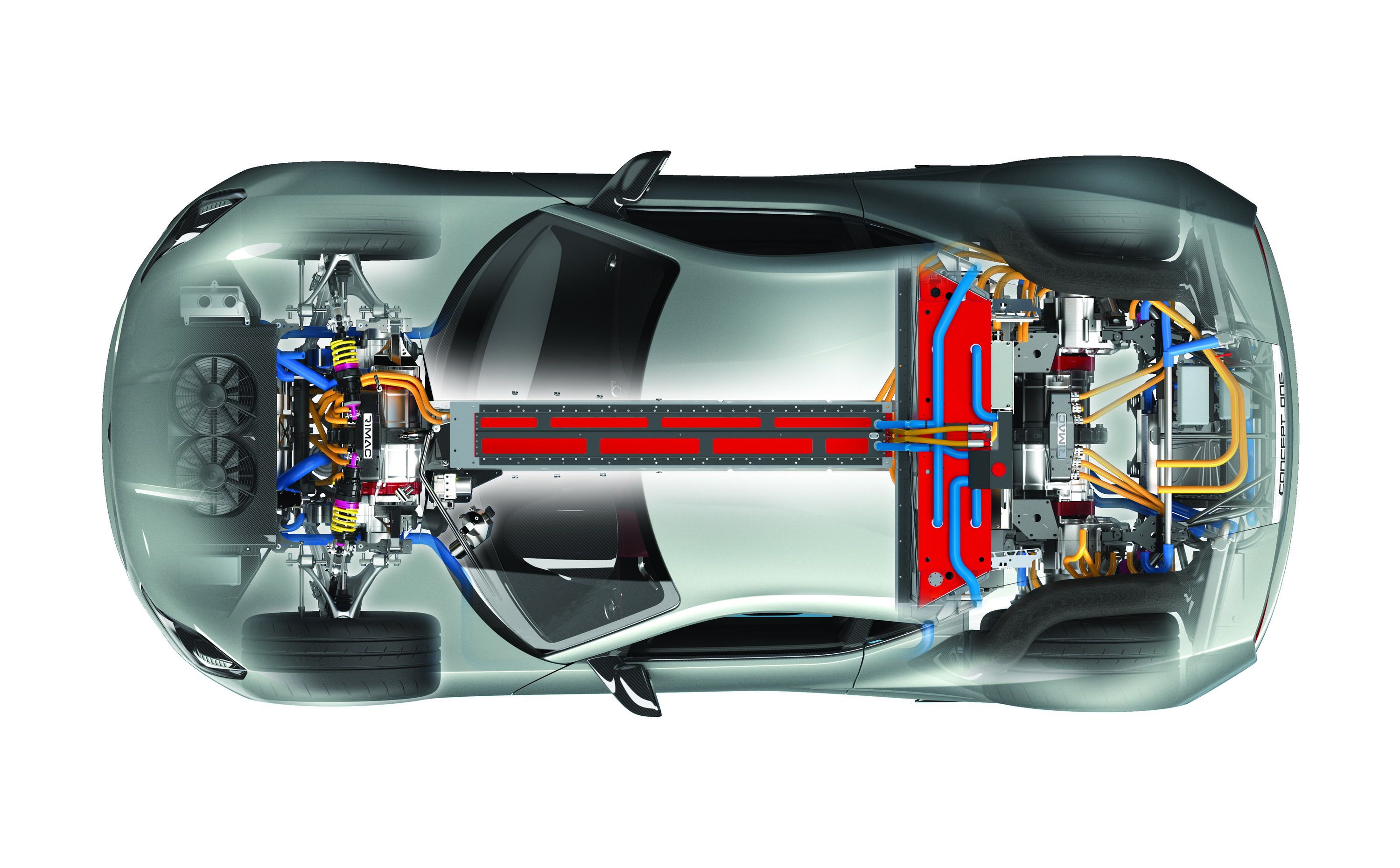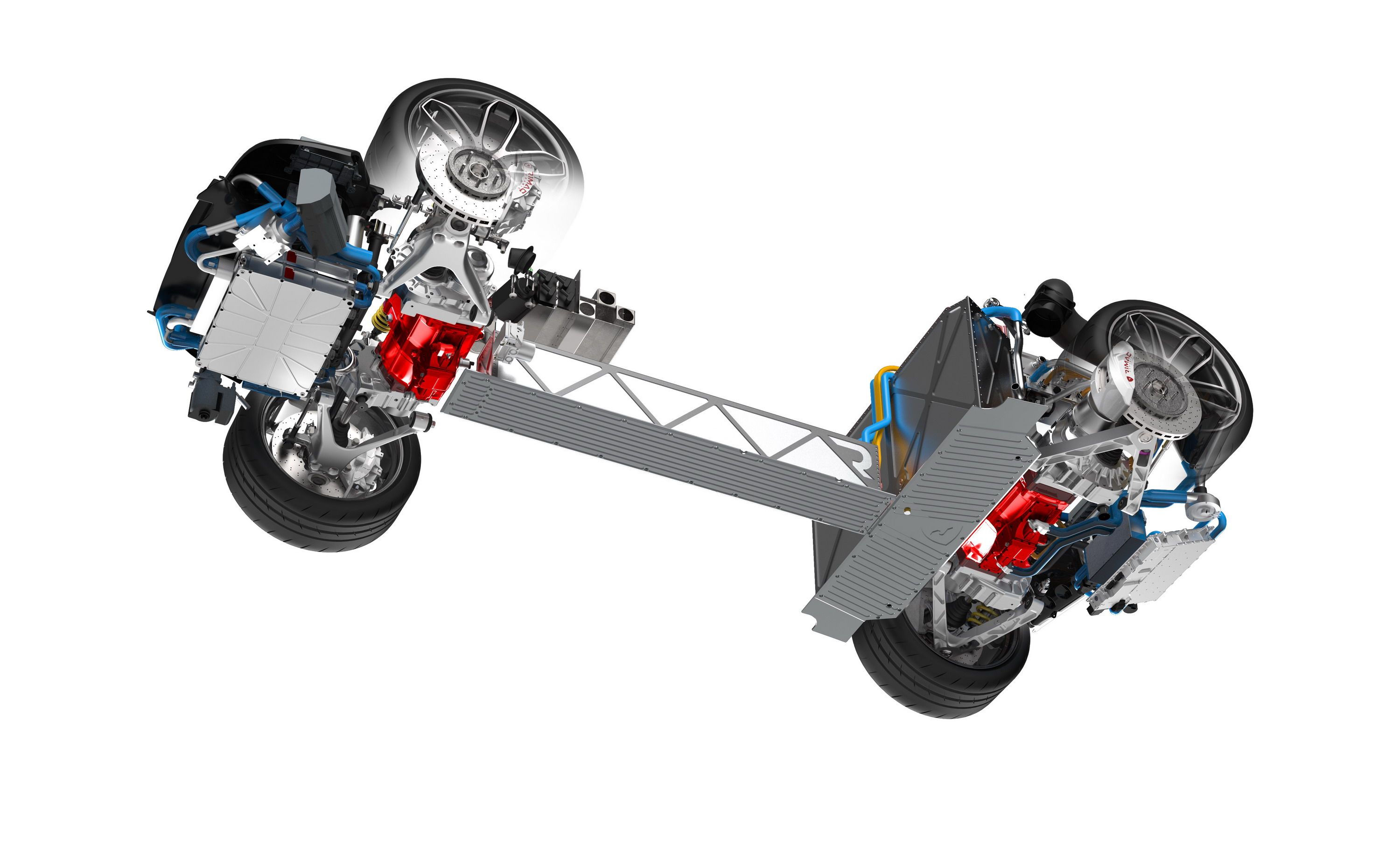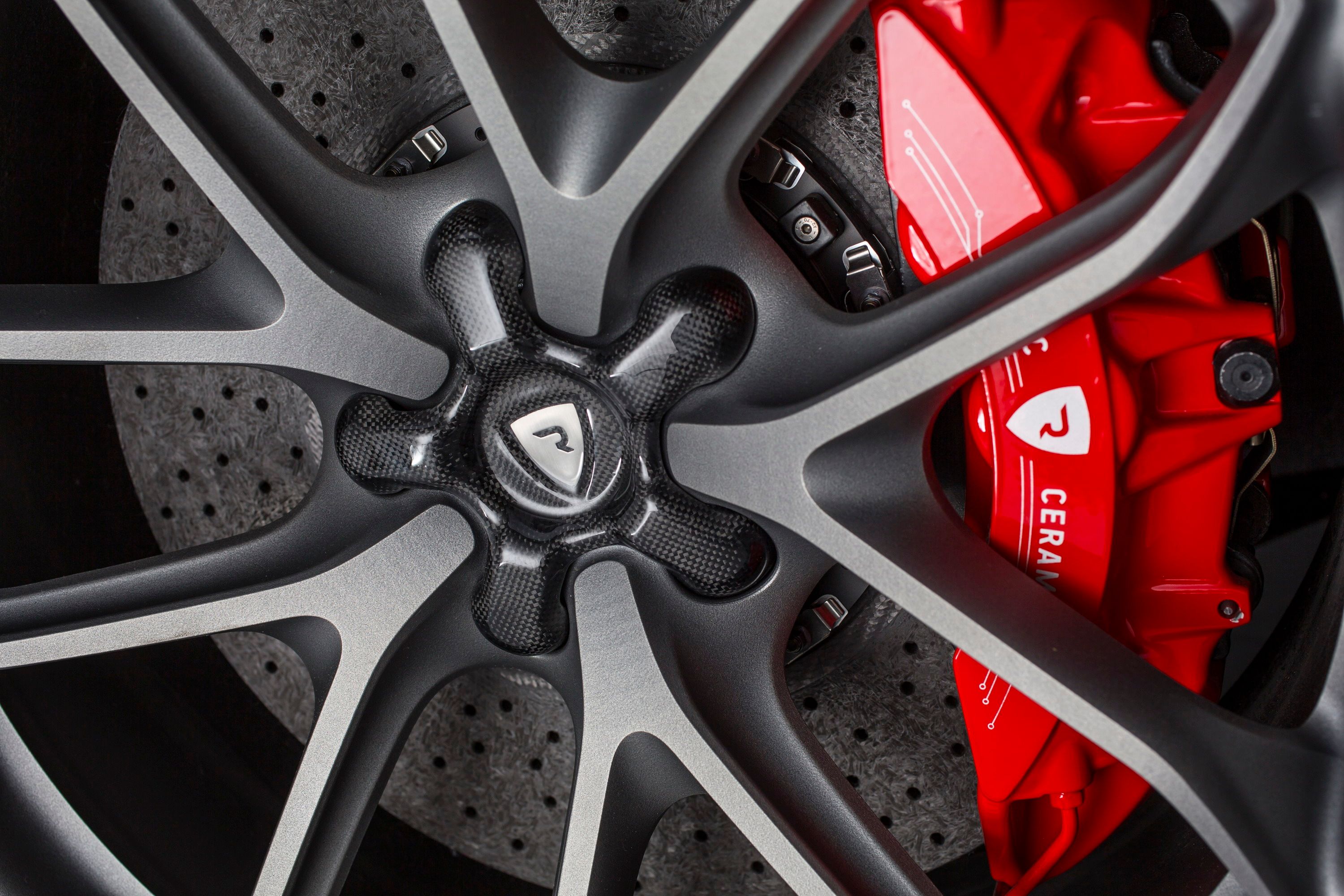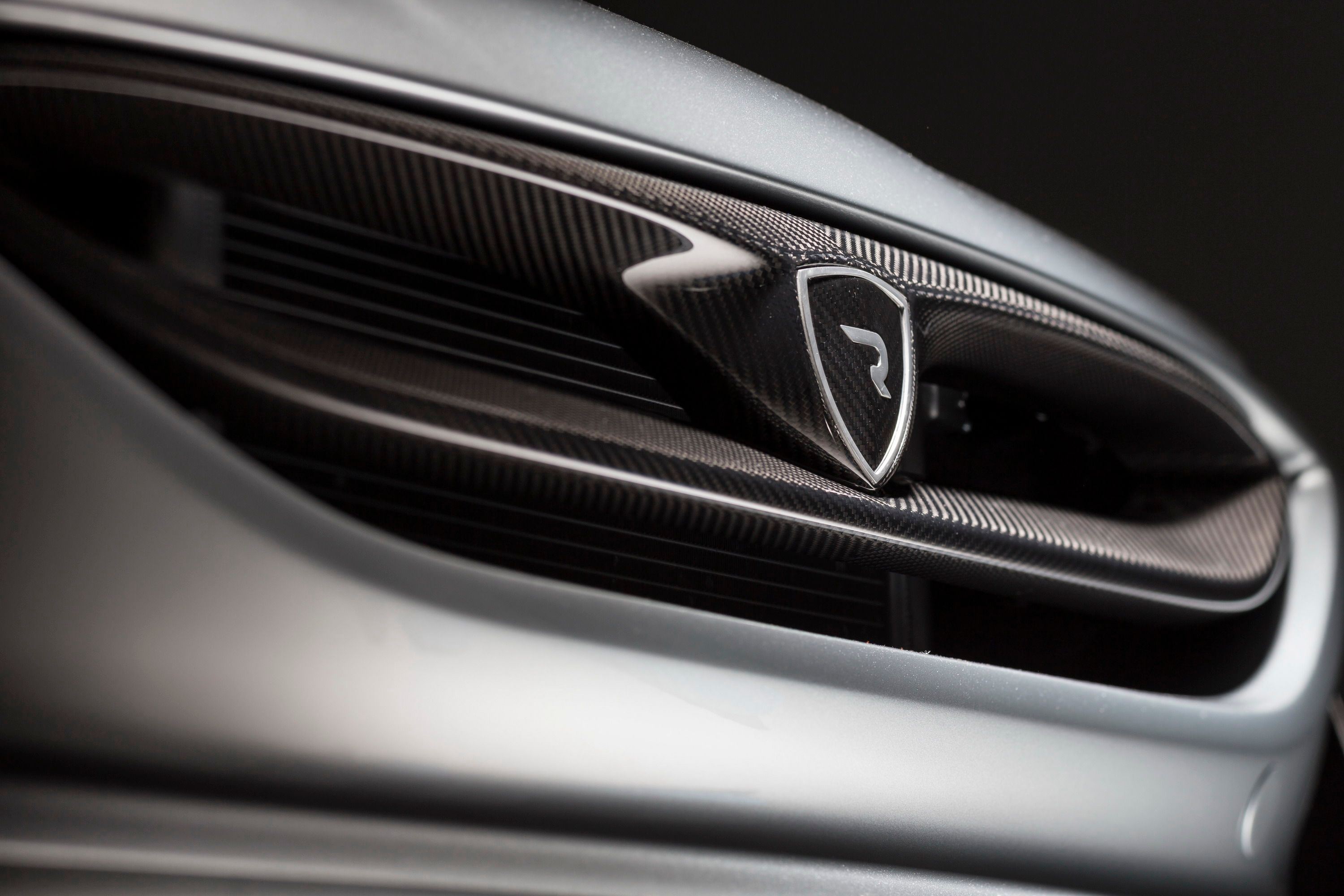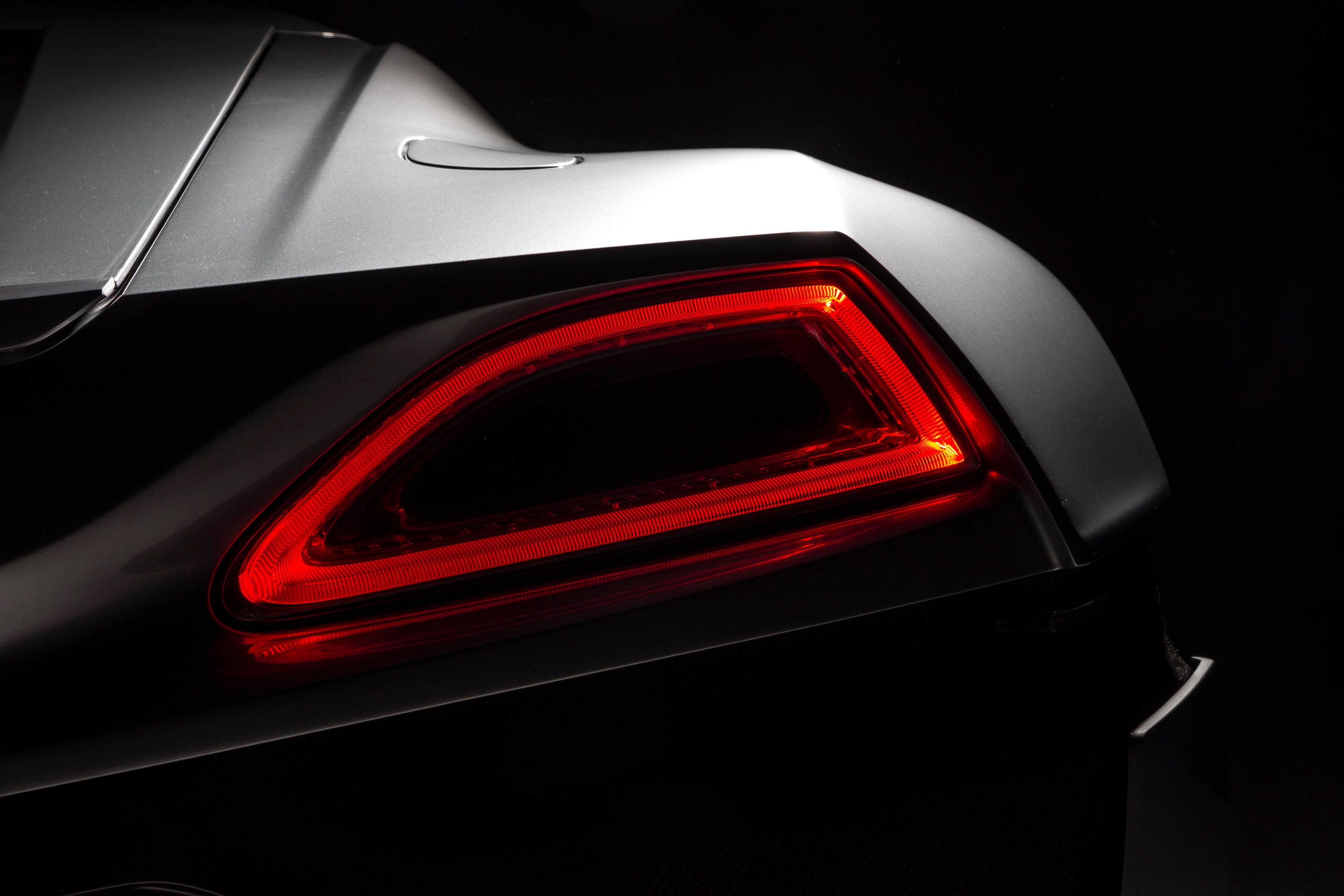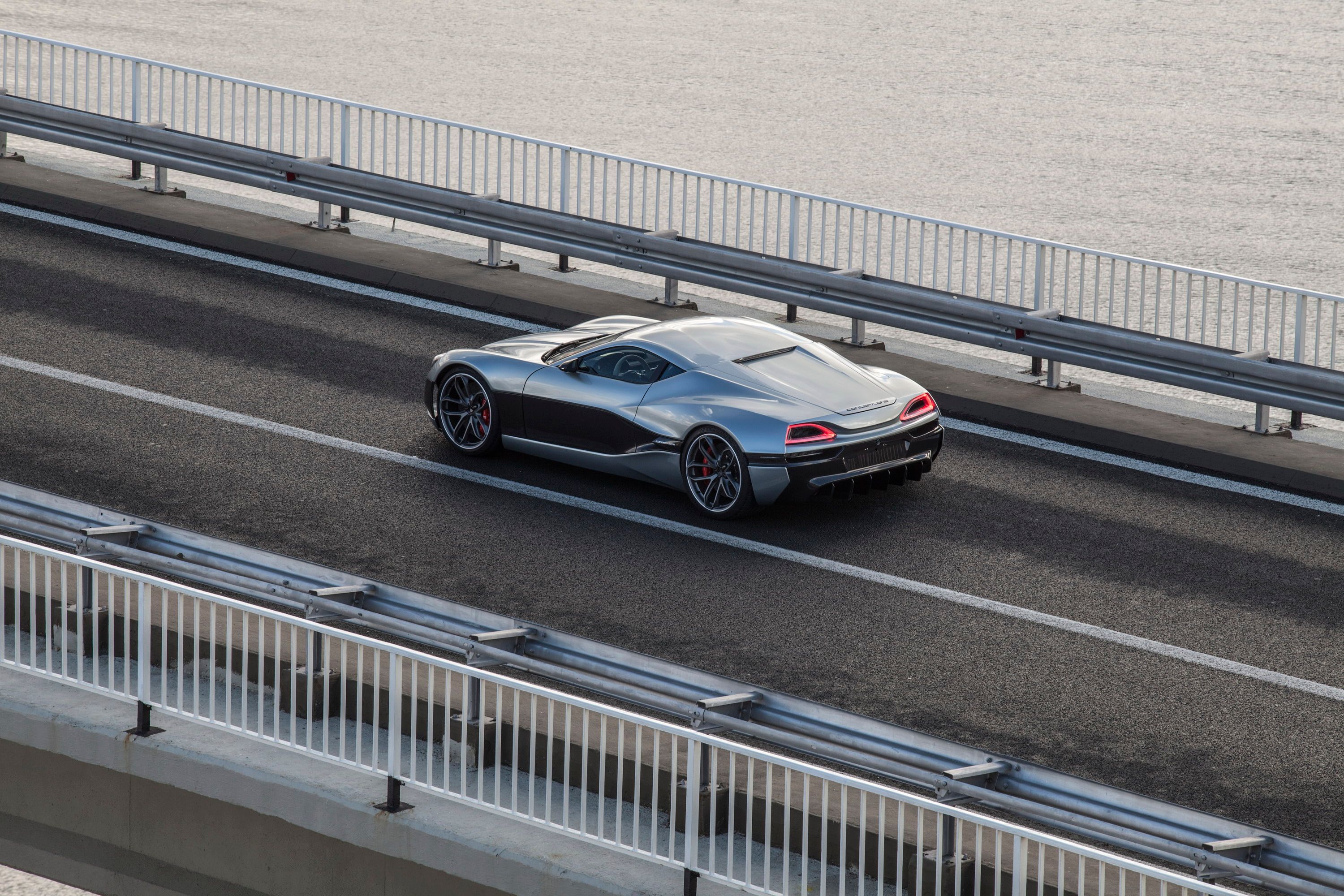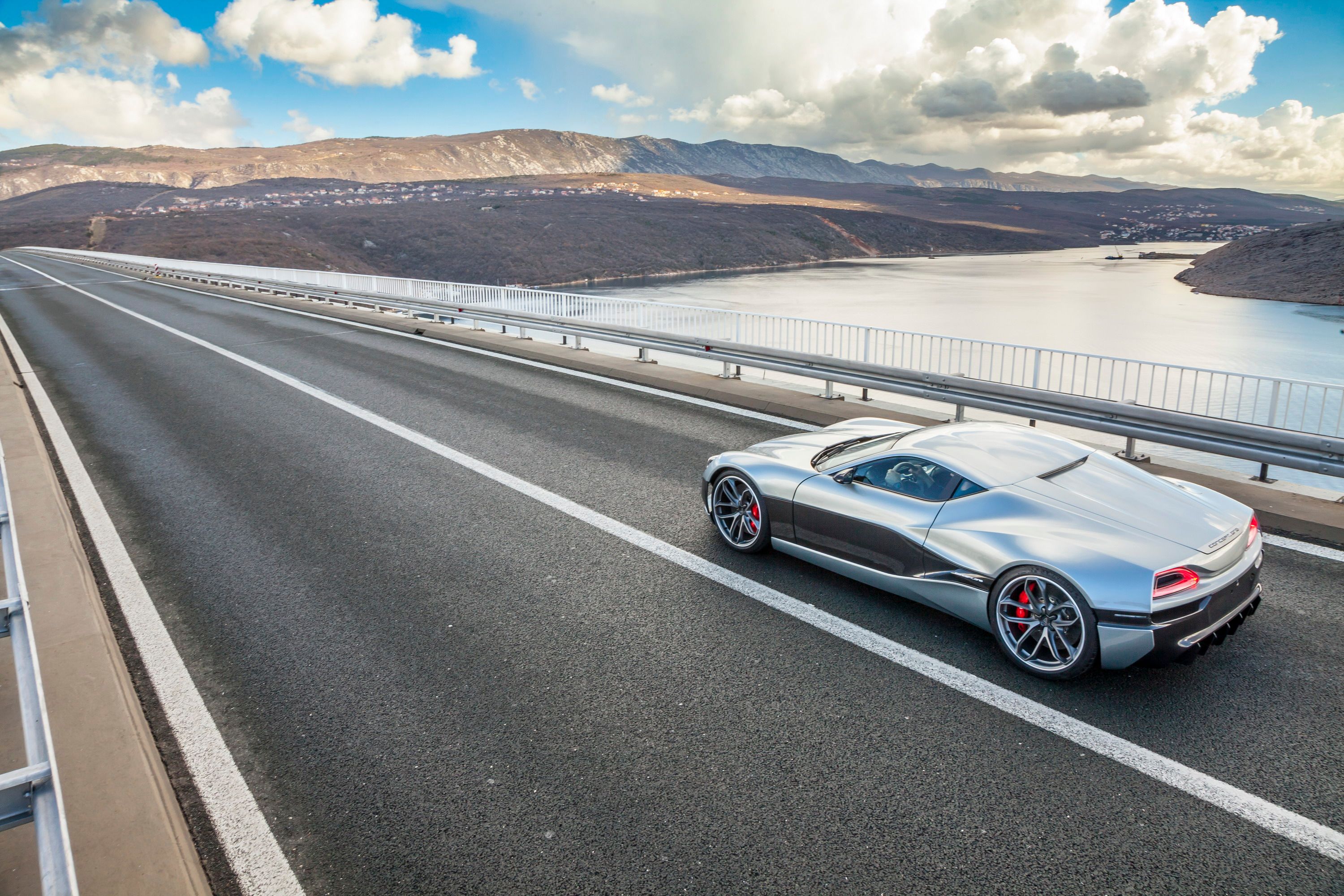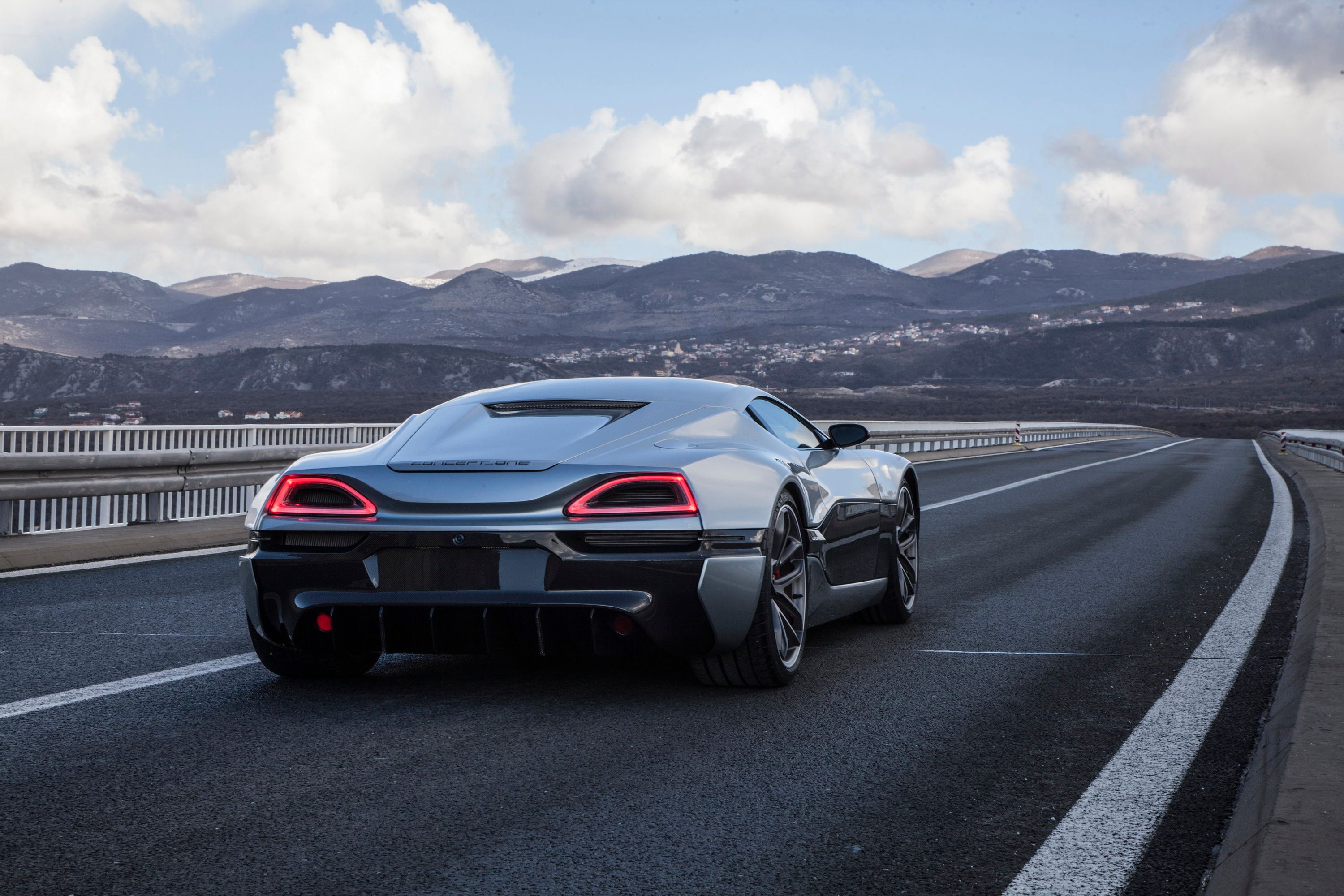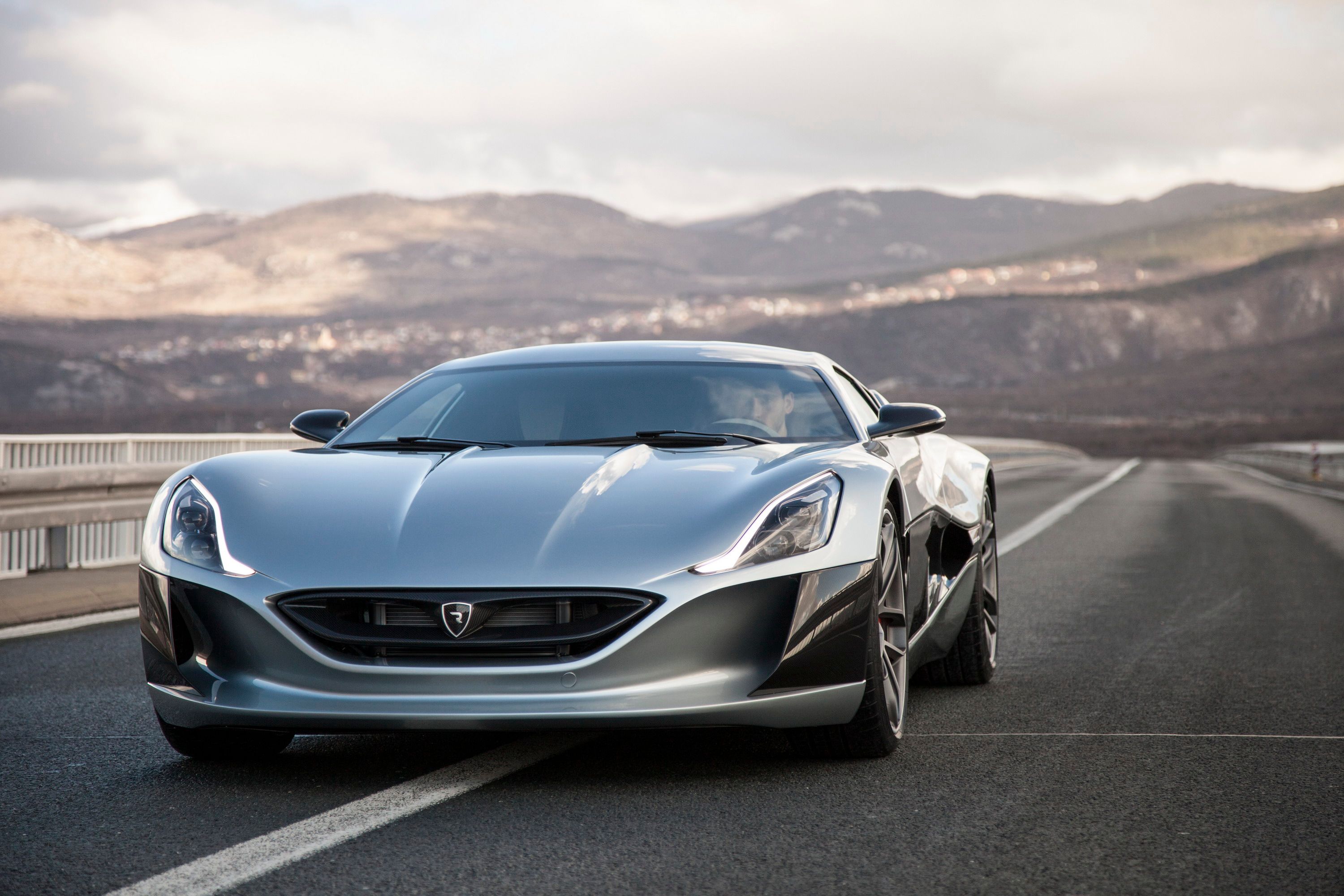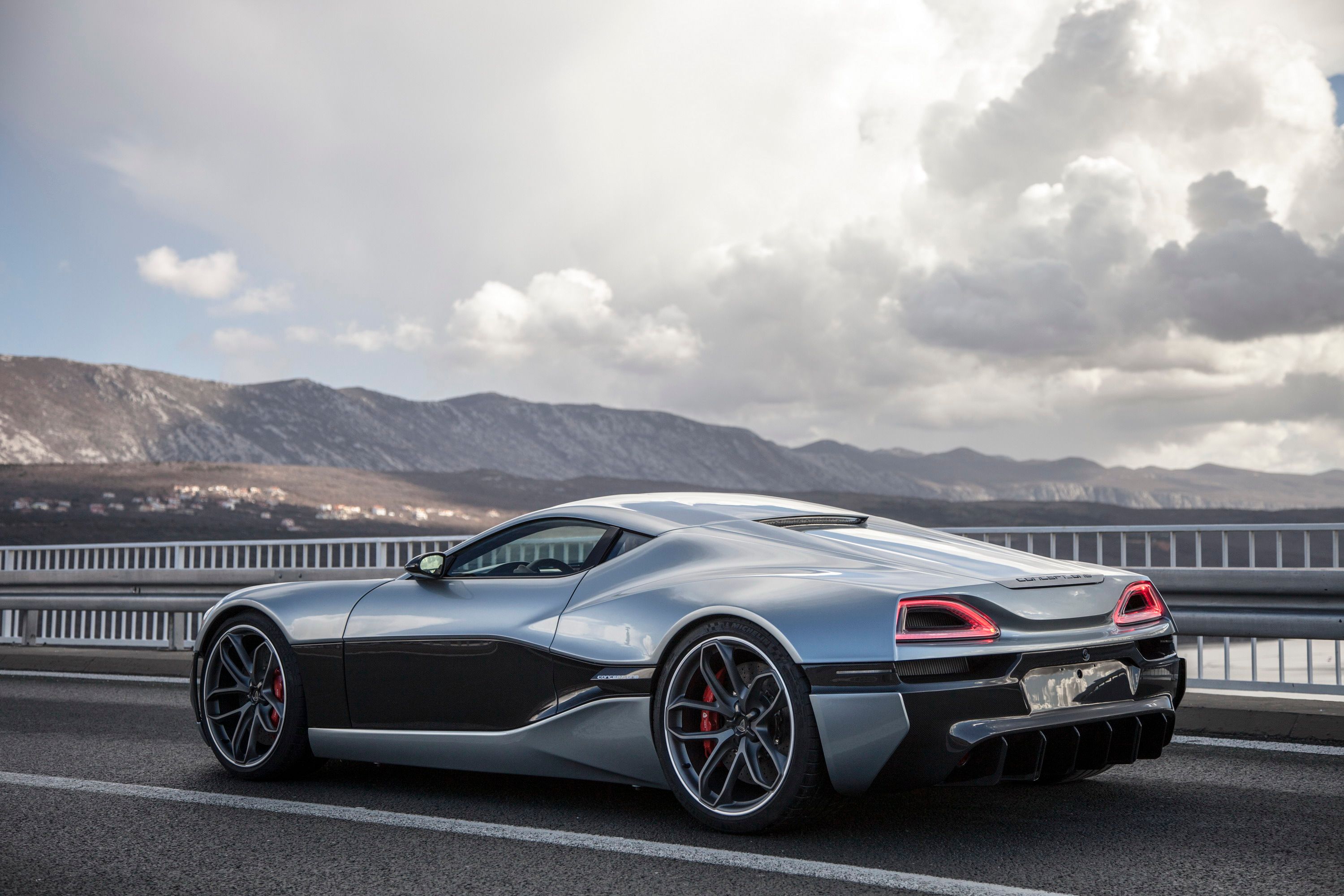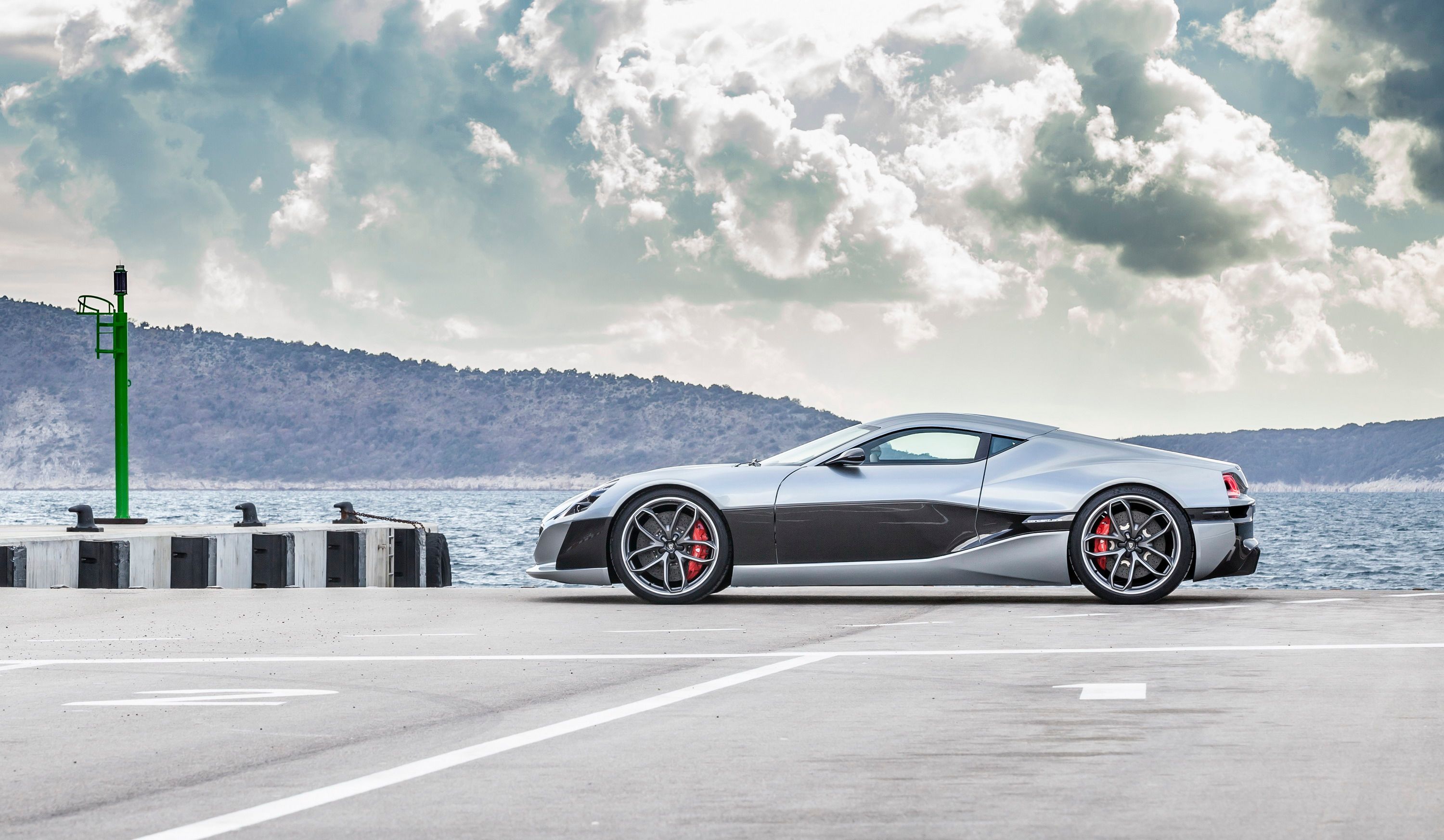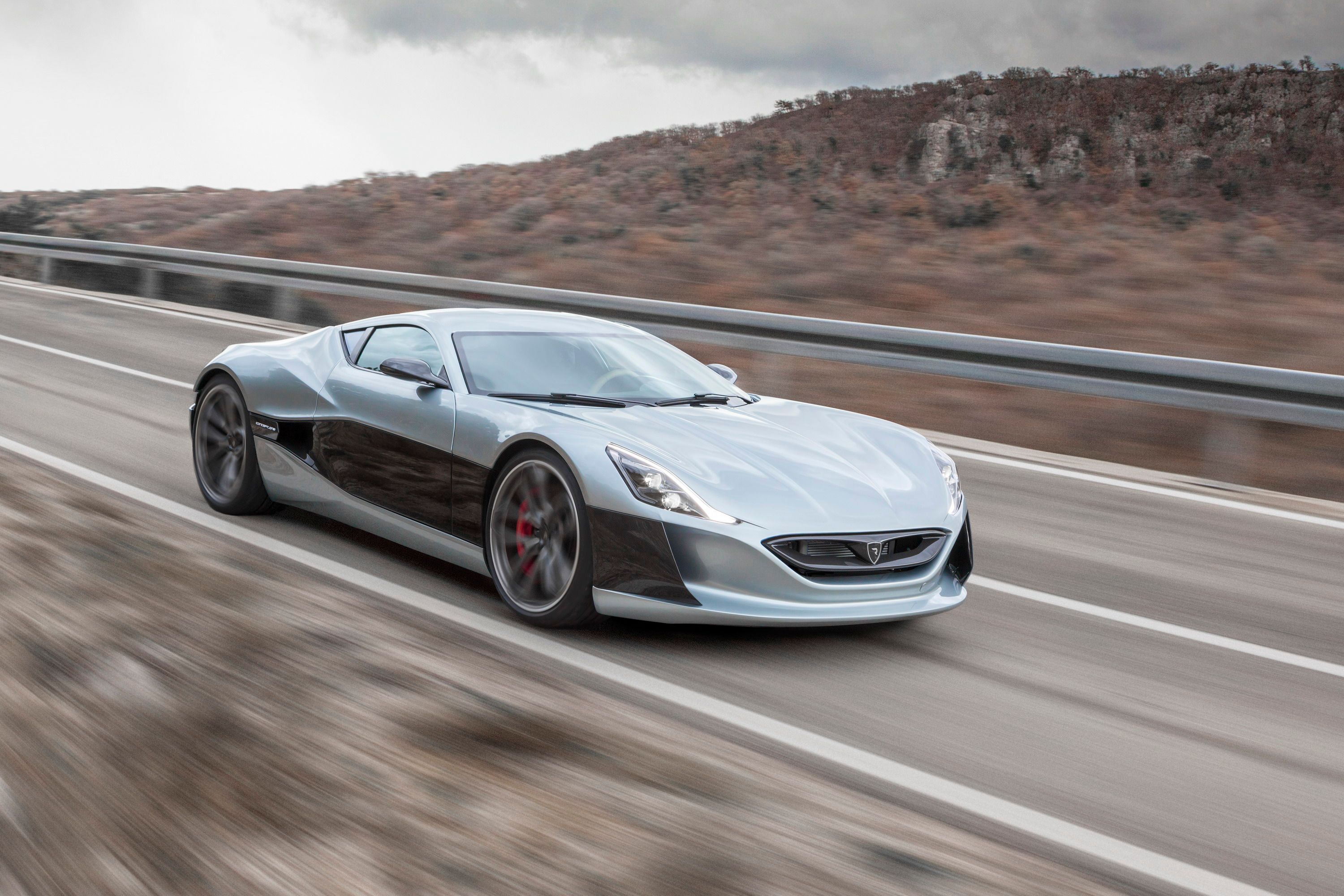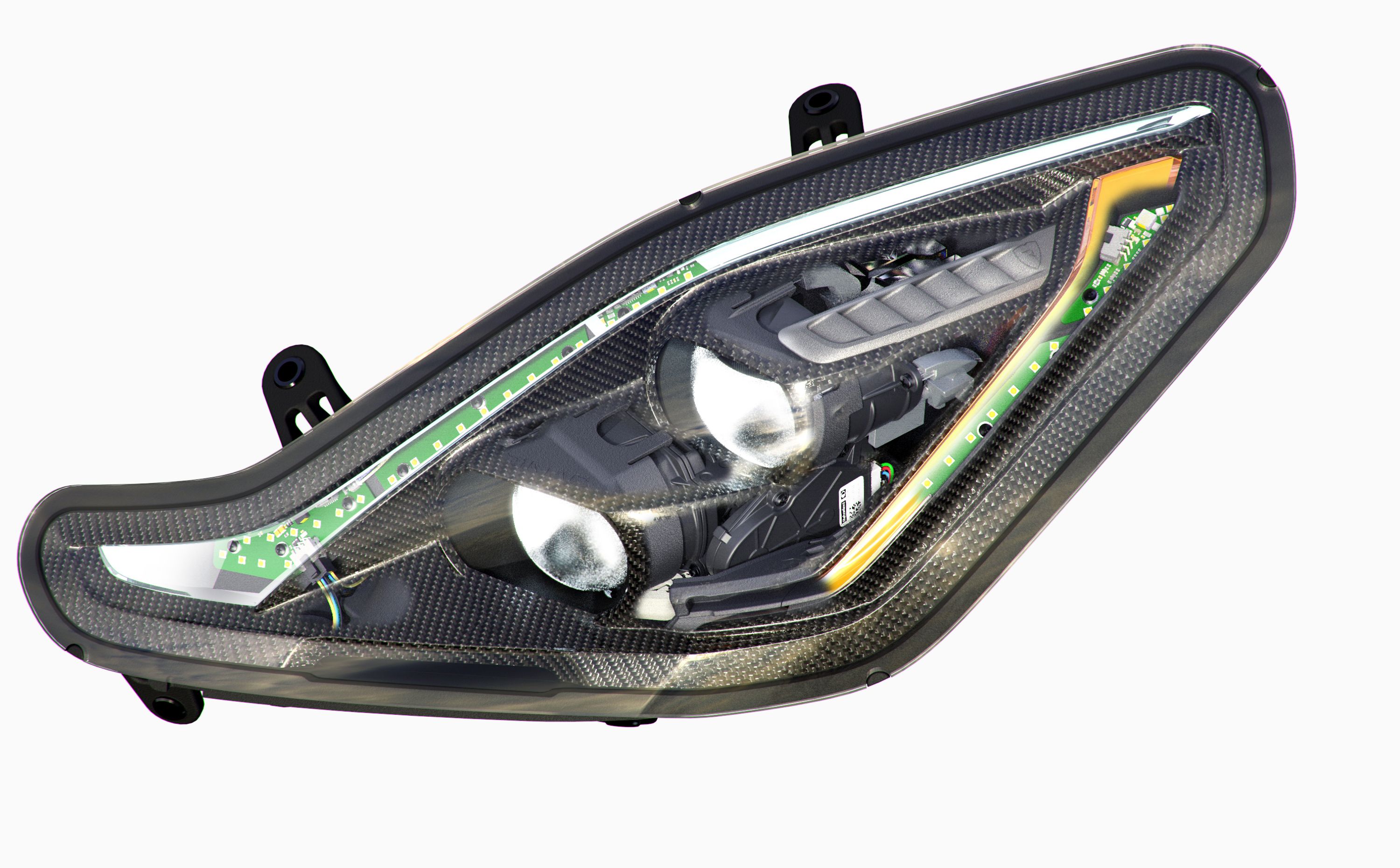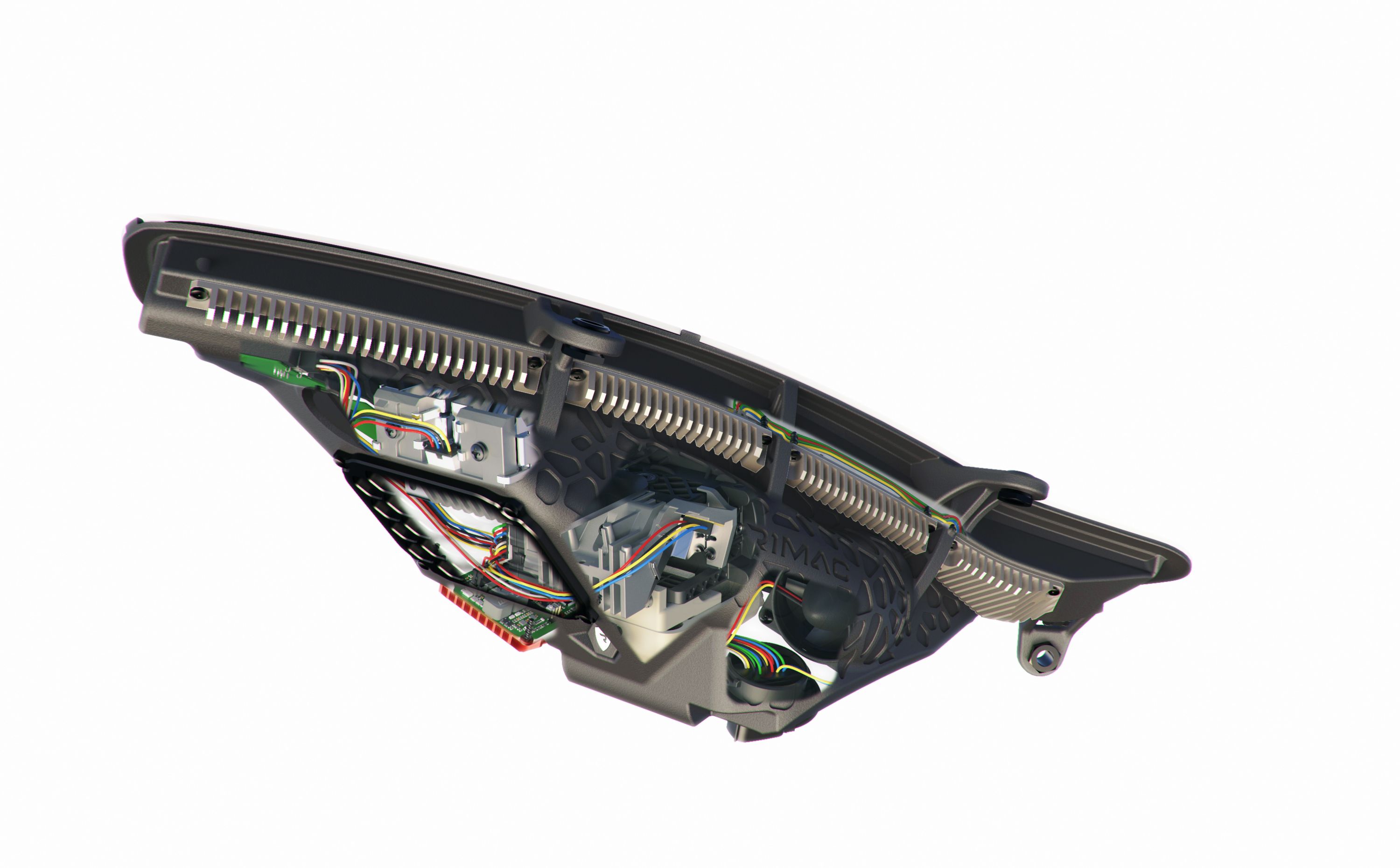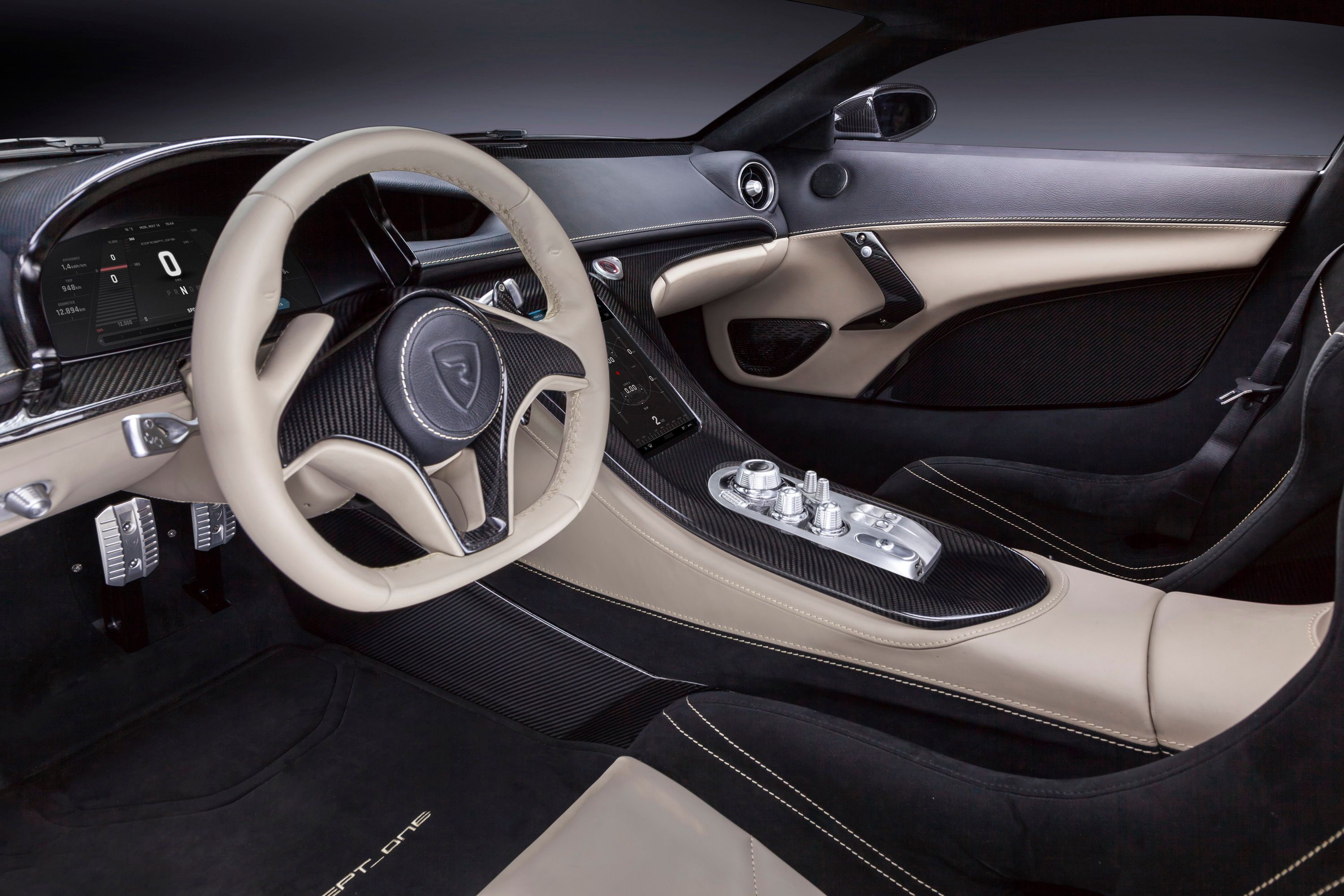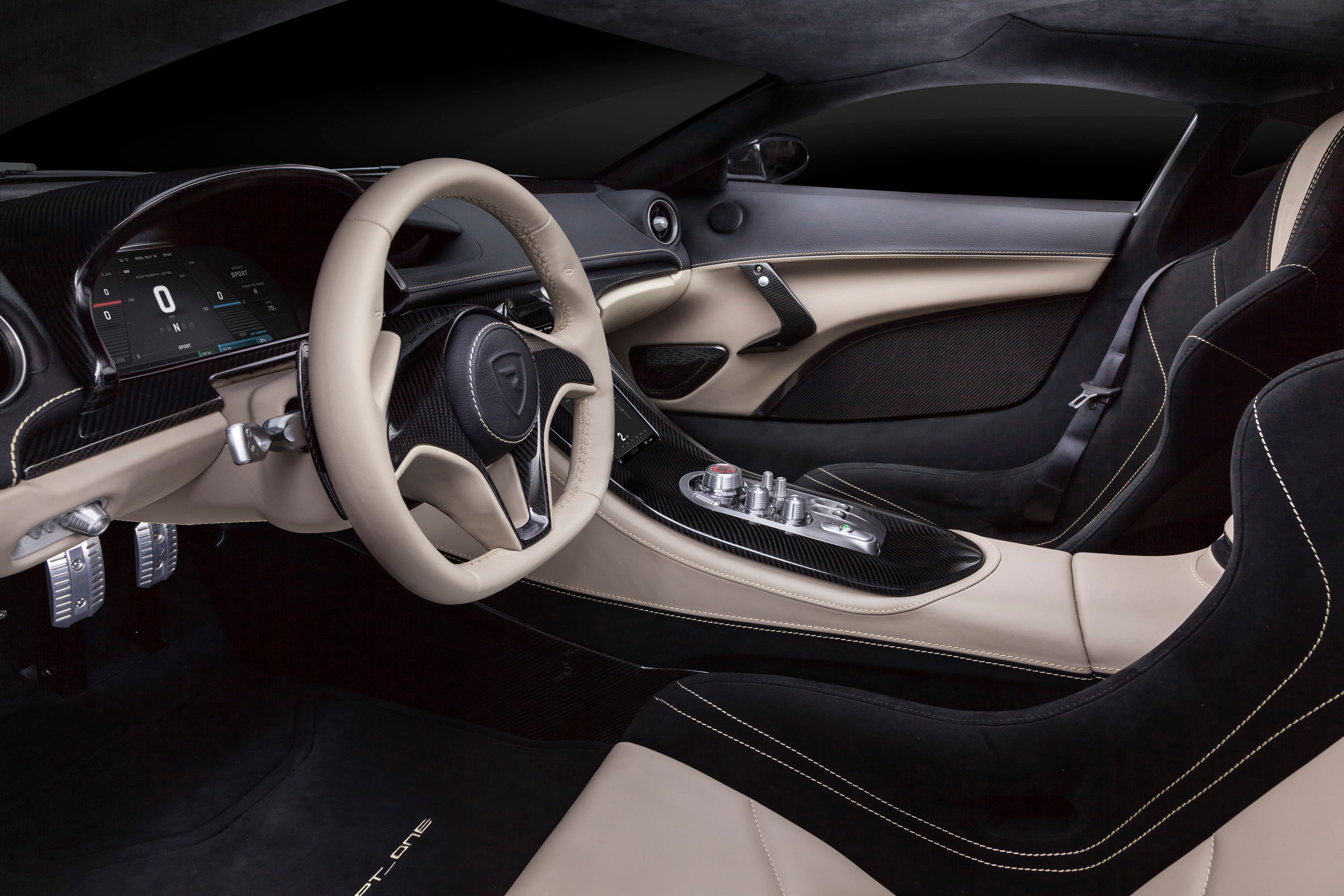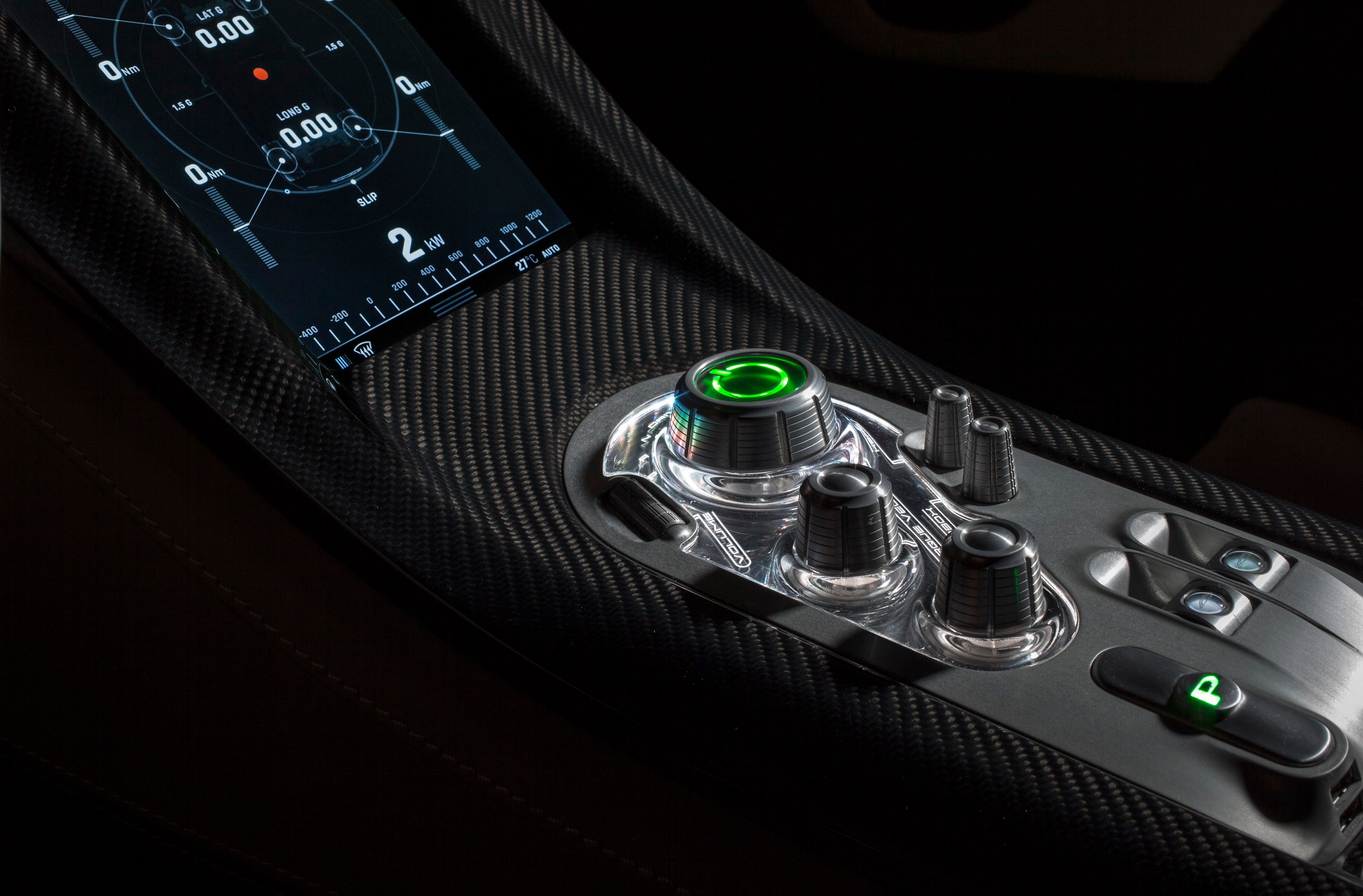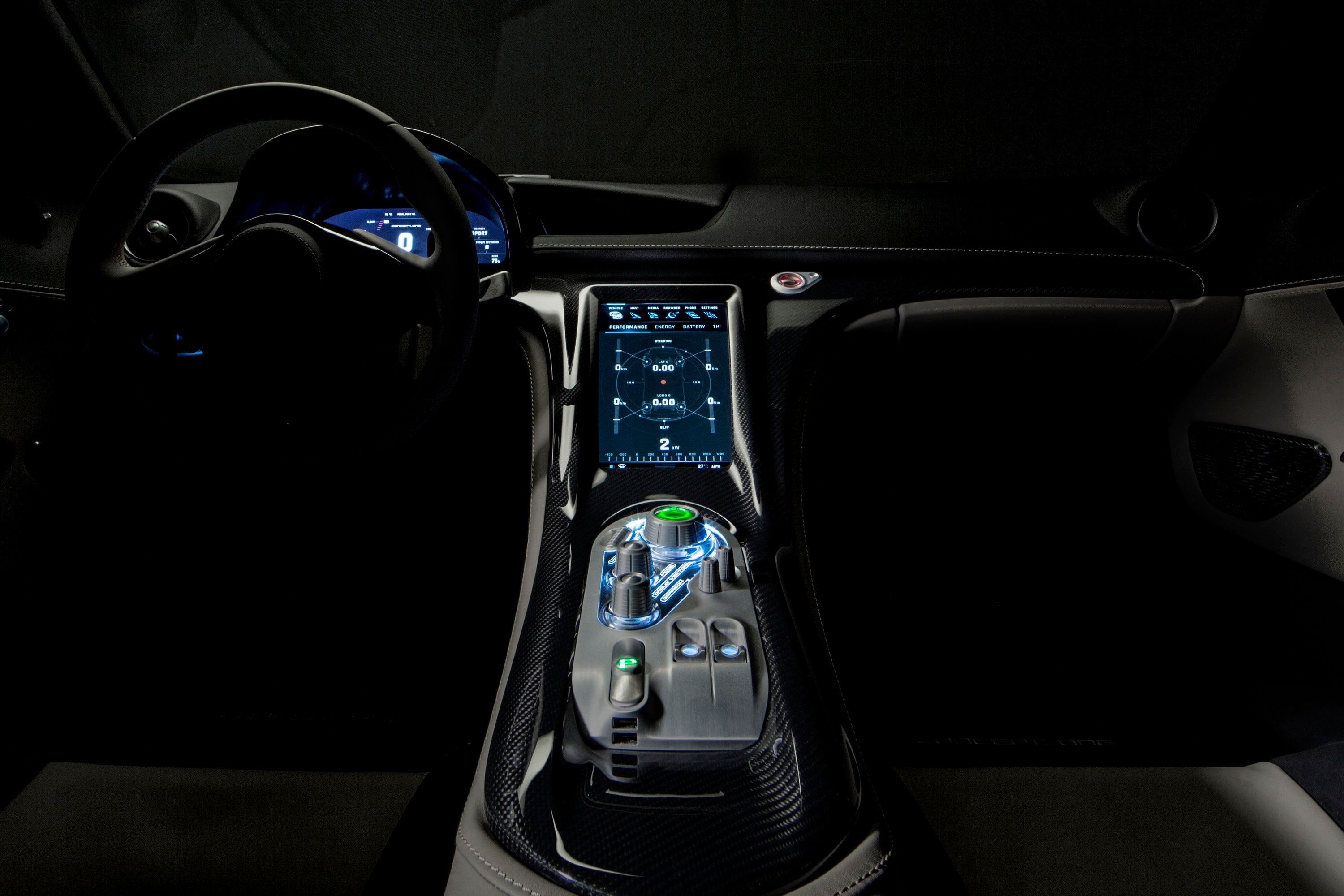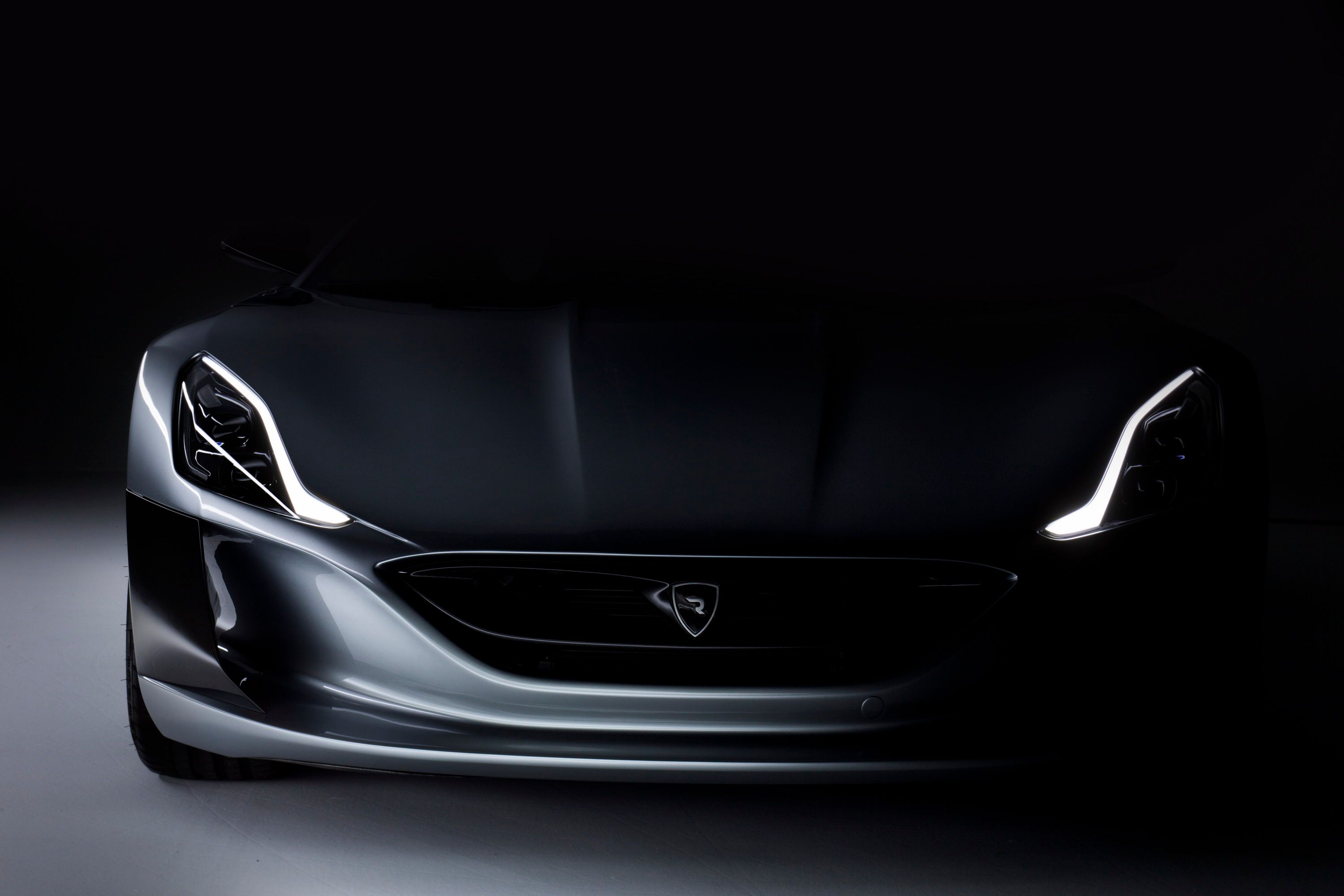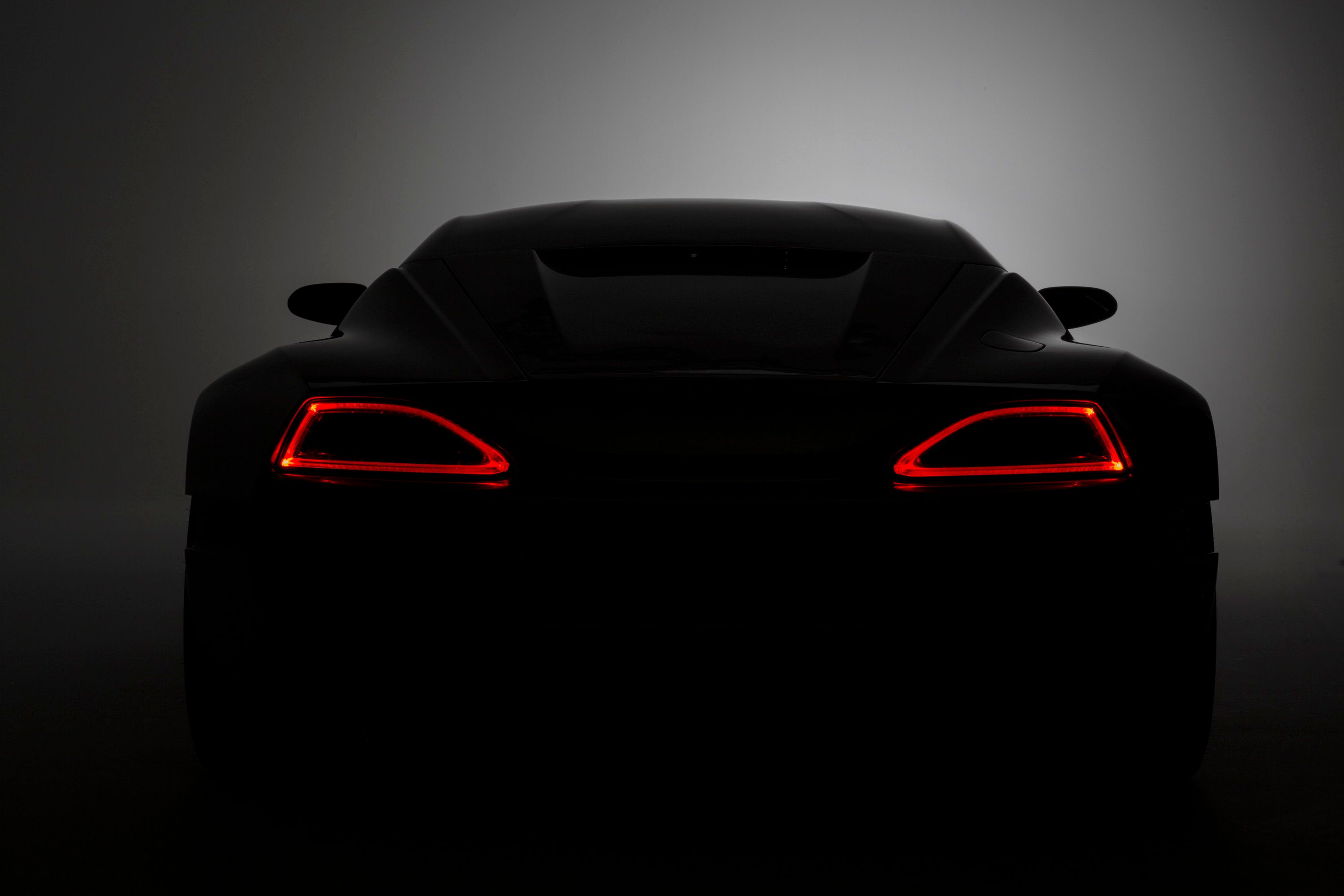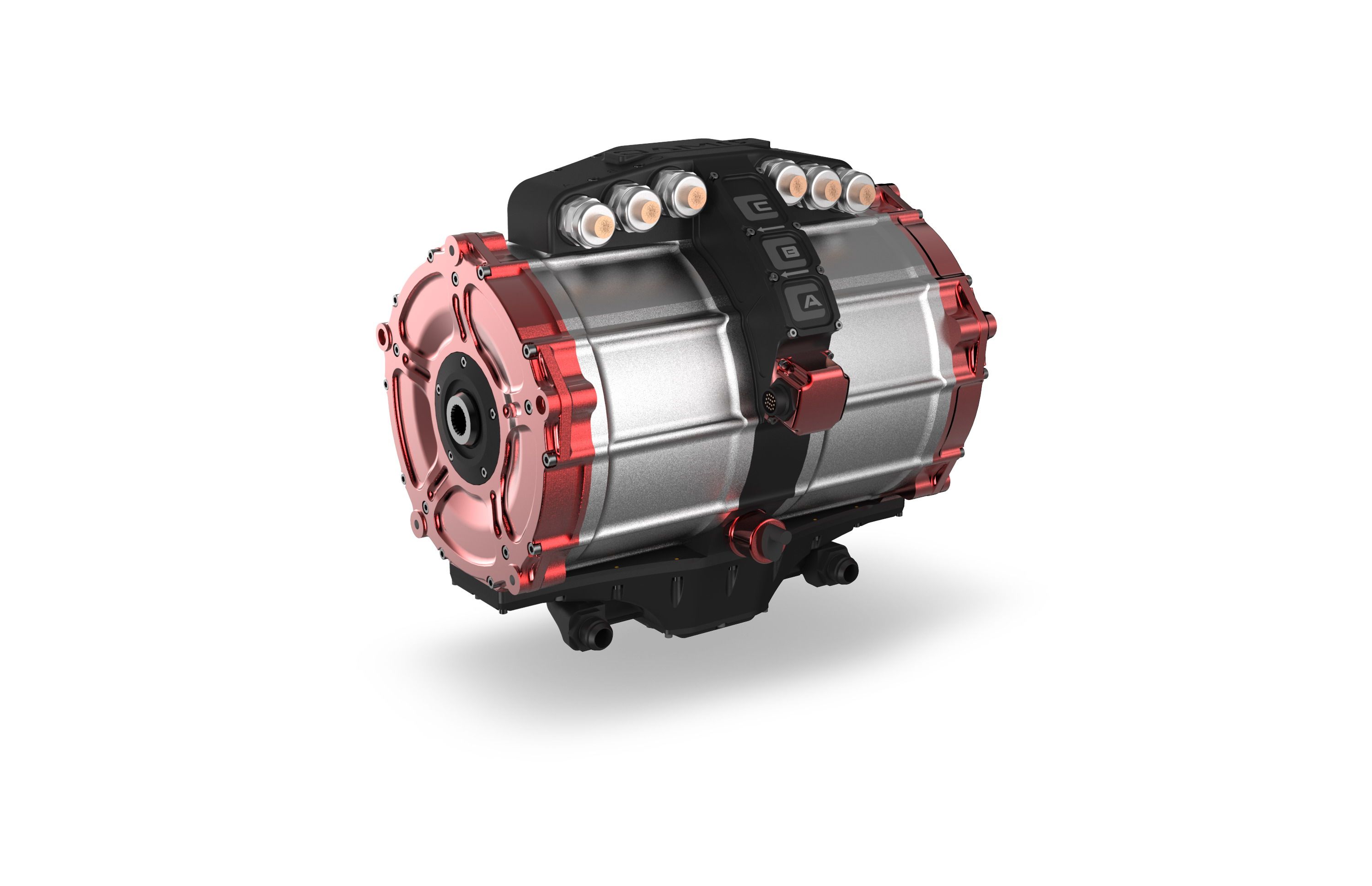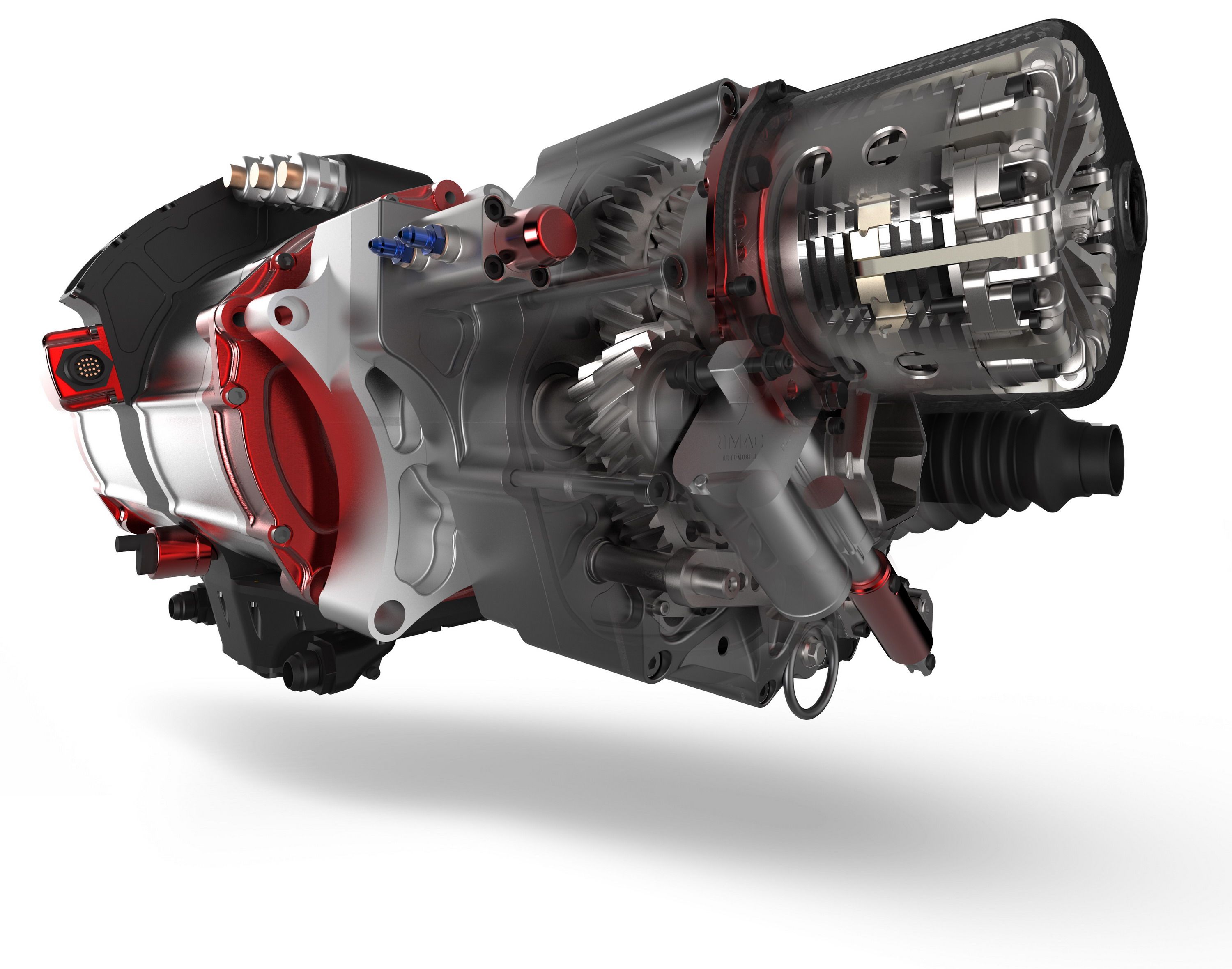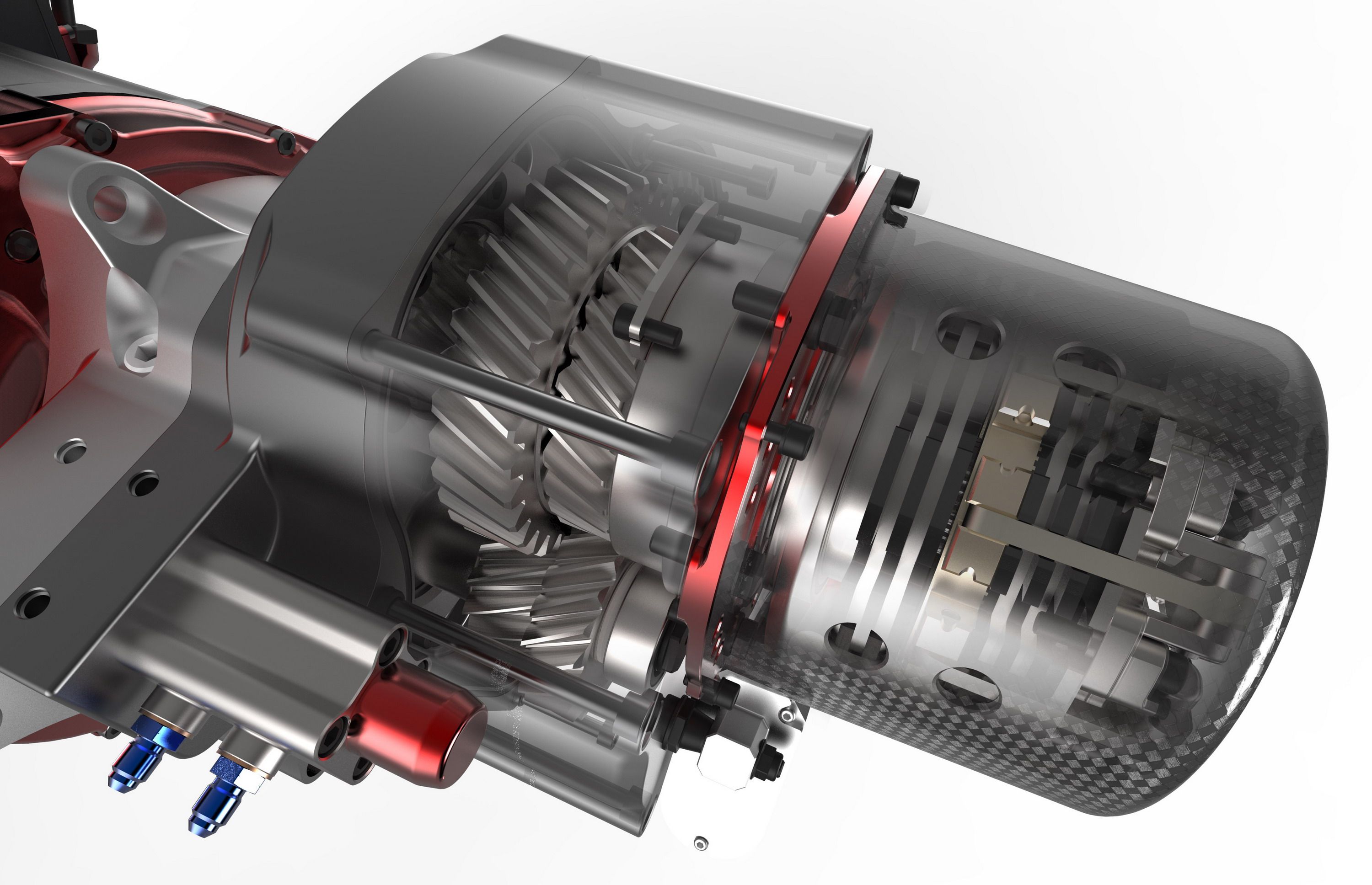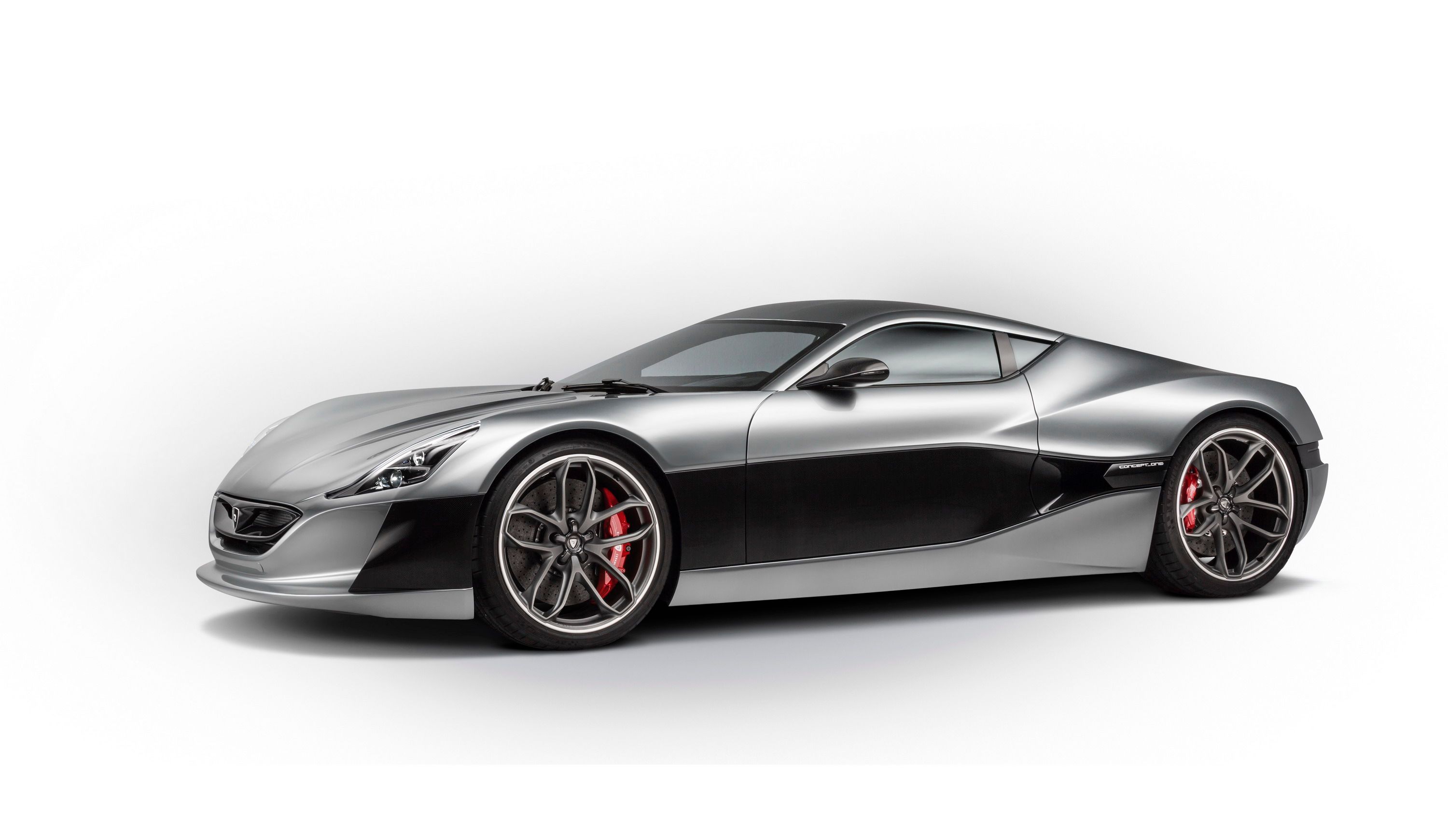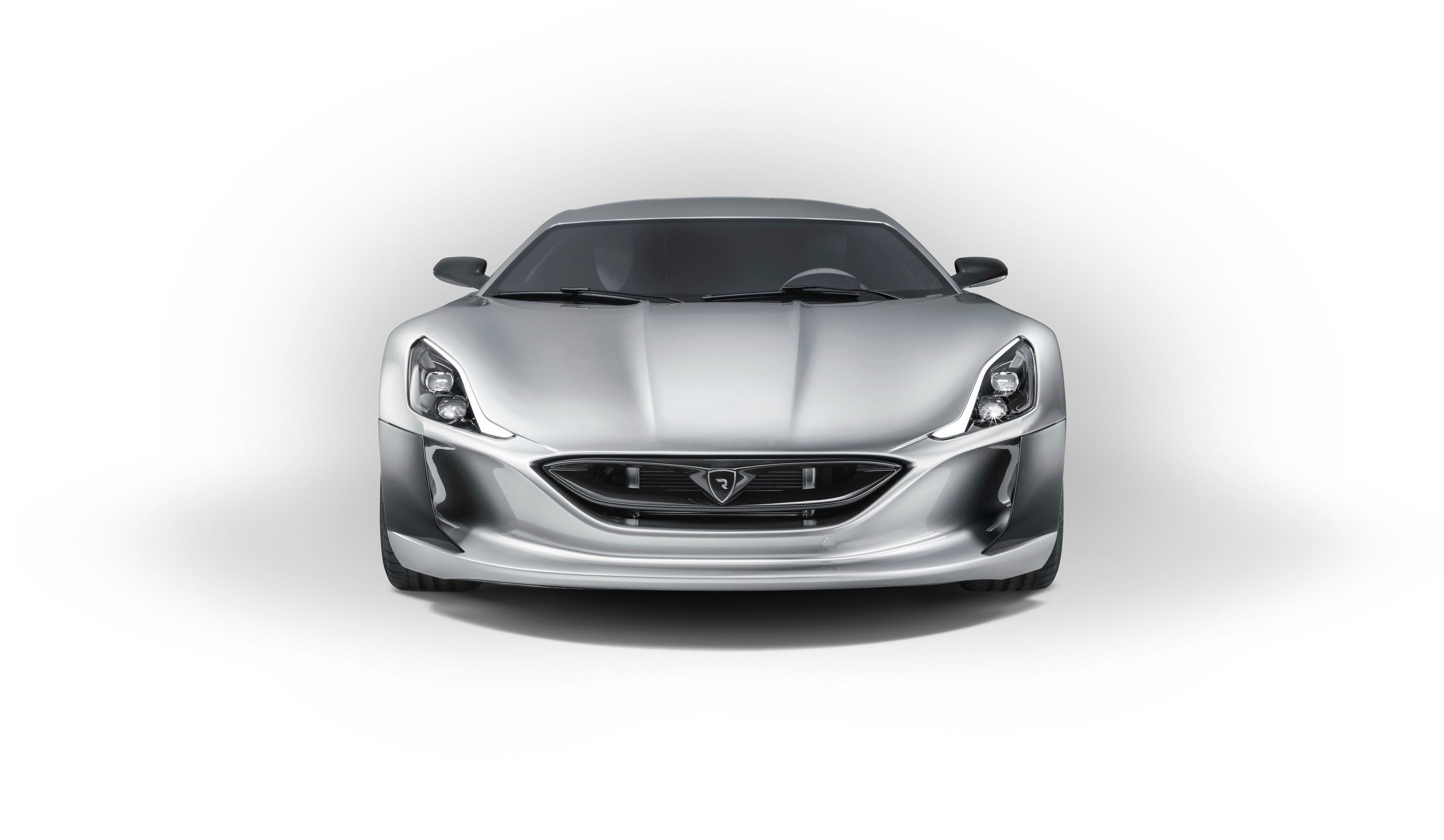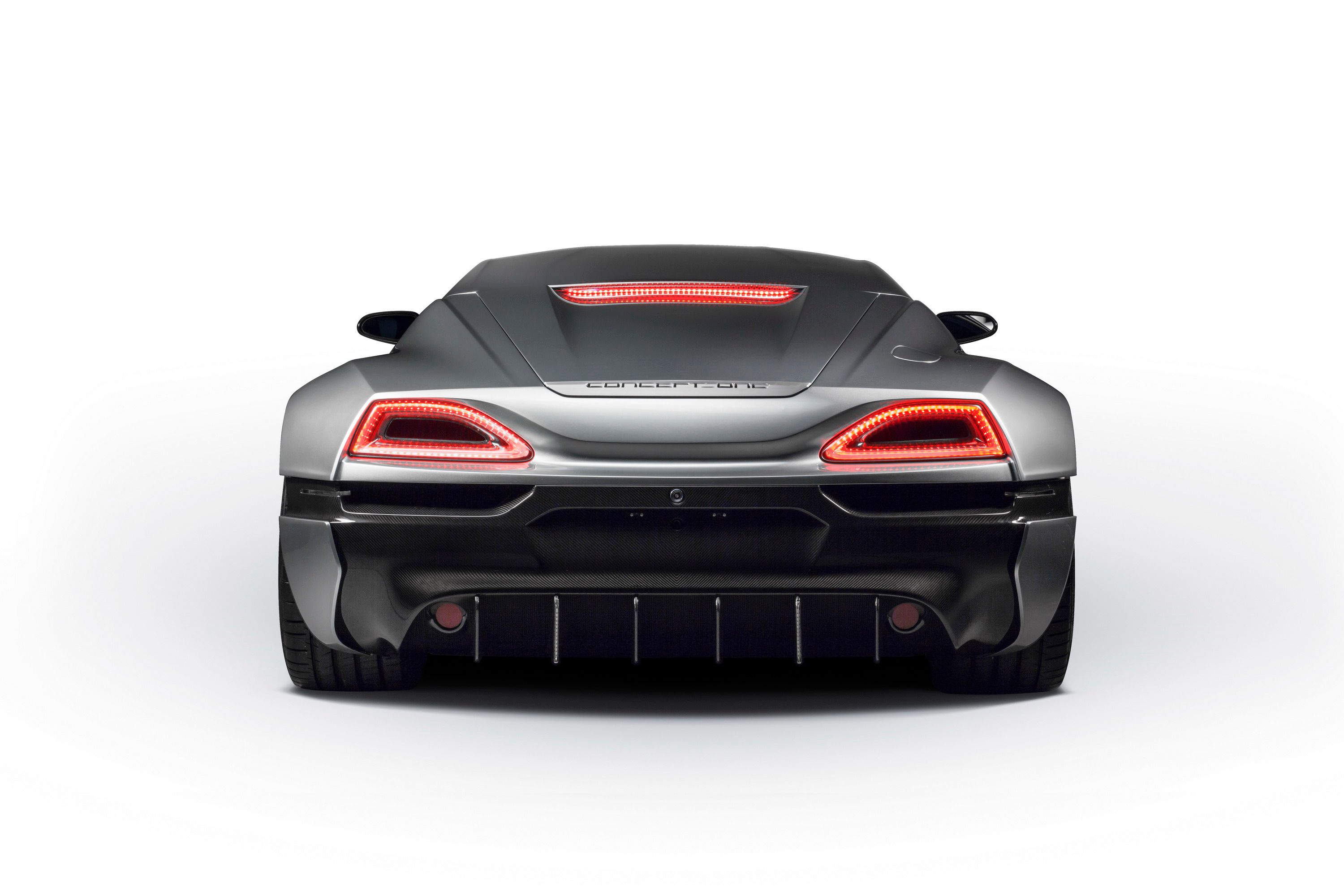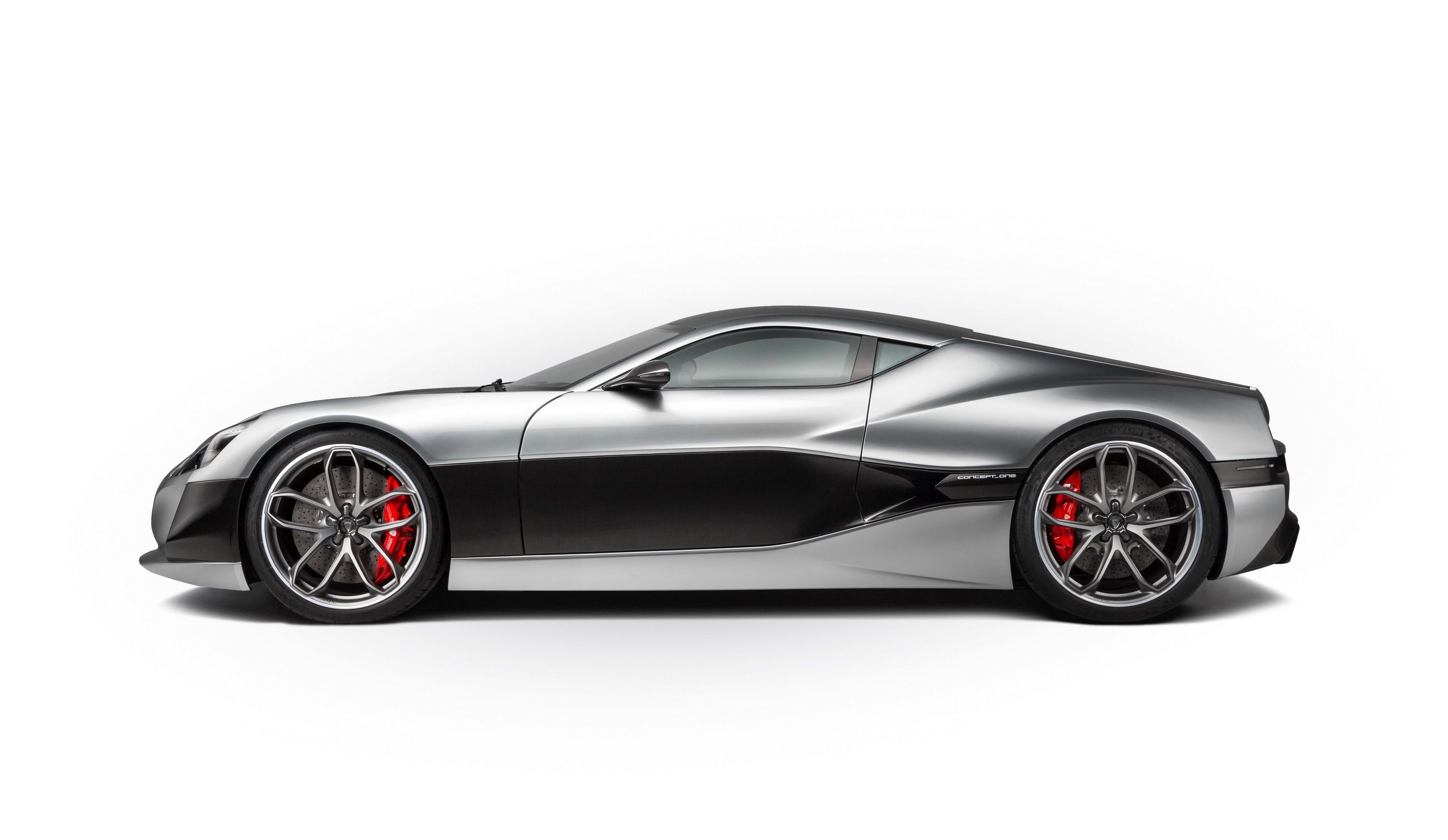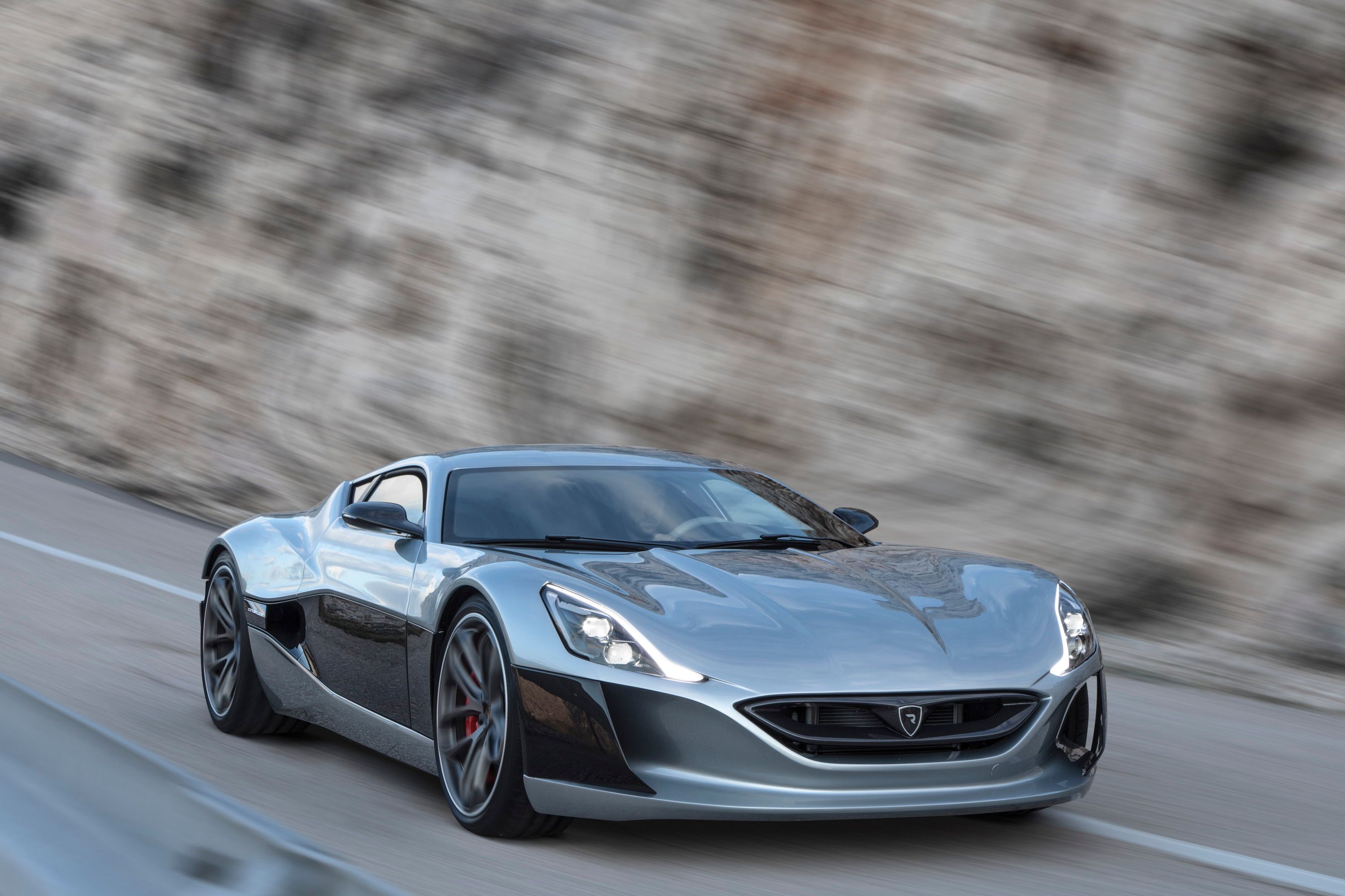Electric vehicles->ke1030 are on the rise. The statement works figuratively if you consider the recent proliferation of new EV models and technology,->ke1701 but it also works literally considering the results from the 2015 Pikes Peak International Hill Climb.->ke1001 Crowding the podium at last year’s “Race to the Clouds” was a duo of all-electric racers – a first in the event’s nearly century-long history. One of those cars was the E-Runner Concept_One, a joint effort by Japanese racing driver Nobuhiro “Monster” Tajima and Croatian EV-builder Rimac Automobili.->ke3928 Incredibly, Rimac is now gearing up to release a production version of the Concept_One, and it’s packing sensational styling, a lovingly crafted interior, and output figures with four digits.
As you can imagine, the road here hasn’t been an easy one. Rimac took five years to create the production-ready Concept_One,->ke3929 following an initial reveal in 2011 with four ground-up redesigns. Practically everything on the car was conceived, developed, and manufactured by Rimac in-house.
“My goal was to not to create an electric version of existing supercars,->ke177” said Mate Rimac, CEO of Rimac Automobili. “I wanted to create technology to make the supercar considerably better in every regard – faster, more fun and more efficient. I wanted to make the supercar of the 21st century.”
Simply put, this is Rimac’s magnum opus, a technological tour de force in every sense. But is the world’s first all-electric hypercar really ready for primetime?
Continue reading to learn more about the Rimac Concept_One.
2017 Rimac Concept_One
- Make: Array
- Model: 2017 Rimac Concept_One
- Horsepower: 1072
- Torque: 1180
- [do not use] Vehicle Model: Array
Exterior
I’ll just come out and say it – I like how this thing looks. Unlike many limited-run fantasy machines, the Concept_One manages a somewhat broad aesthetic appeal. It’s futuristic, but not too busy, sleek, but bold. I see a lot of Jaguar ->ke39in there, with the front fascia lines of the F-Type,->ke1224 plus the low-and-wide stance of the XJ220. I also see the Noble M600 and a little Bugatti->ke16 in the profile, while the flat rear conjures images of the Koenigsegg Agera.->ke3628
This attractive appearance can be chalked up to the new platform Rimac created. The company’s blank-slate approach meant designers had a ton of wiggle room to make something that was both appealing and aerodynamically functional. It also meant Rimac could develop the chassis and drivetrain in tandem, reducing weight and maximizing the benefits of all-electric motivation.
At its heart, the Concept_One is a chromoly space-frame, with aluminum and carbon-fiber semi-stressed members. However, despite all the lightweight materials, the onboard battery packs and electric motors still create a lot of heft, translating into a somewhat portly 4,079-pound curb weight. That’s heavy, especially when you consider how the Concept_One is significantly smaller than its hybrid-hypercar competition.
Exterior Dimensions
|
Weight |
1,850 KG (4,078 LBS) |
|
Length |
4,187 MM (164.84 Inches) |
|
Width |
1,842 MM (72.51 Inches) |
|
Height |
1,070 MM (42.12 Inches) |
Interior
Step inside this two-seater, and you’ll be met with a totally customized interior drenched in high-end materials. Everything is either carbon fiber, Alcantara, or aluminum, including the various buttons, all of which were machined from billet aluminum.
Of course, there’s a central touchscreen as well, which provides the control point for Rimac’s in-house developed infotainment system. Available data includes energy consumption rates and settings for various vehicle features. Rimac says it placed 500 sensors throughout the vehicle to relay pertinent info back to the driver, and you can analyze the car’s telemetry data via the touchscreen, your computer, or even your smartphone.
Drivetrain
Here are a few numbers – 1,072 horsepower and 1,180 pound-feet of torque. Here are a few more numbers – 0-to-62 mph in 2.6 seconds, 0-to-124 mph in 6.2 seconds, and 0-to-186 mph in 14.2 seconds. Top speed is 221 mph.
You know, I try to be pretty conservative when it comes to using the word “bonkers” in reviews, but in this particular circumstance, I think it’s more than appropriate.
Such cartoonish velocity is provided by four permanent magnet electric motors, one per wheel, each mounted in the center of their respective axle.
The 82-kWh capacity battery pack is composed of 8,450 individual cells controlled by Rimac’s custom battery management system. Designed specifically for the rigors of track use, the system incorporates liquid thermal management and low-resistance conducting, and comes equipped with a 22-kW charger and the option for DC quick-charging. The distance-per-charge is currently unavailable, but original estimates put it at 310 miles. Charge times are also unavailable as of this writing.
In addition to four separate motors, the Concept_One also uses four separate gearboxes. To maximize both acceleration and top speed, the two motors mounted in front each use a single-speed box, while the rear motors each get a two-speed unit with a carbon-fiber double-clutch system.
Enhancing both grip and handling is Rimac’s AWD torque vectoring system (or R-AWTV), which was used with great success at Pikes Peak last year. The system incorporates an array of sensors in the chassis and suspension to calculate optimum torque distribution between all four corners one hundred times per second, per motor. R-AWTV acts as the car’s traction control, stability control, and “electric ABS,” and drivers can use it to change the car’s balance between understeer, neutral, and oversteer as desired.
R-AWTV also integrates with the Concept_One’s regenerative power system, which can slow the car with 0.6 g of negative acceleration without using the brakes. Drivers have total control over the influence of this system, either gaining up to 400 kW of off-throttle regen power, or disabling it altogether.
Further customization includes drive modes for either “comfort,” “control,” “track,” or my favorite, “drift mode” (eat your heart out, Ken Block). Alternatively, drivers can turn off torque vectoring completely.
Chassis And Handling
While an all-electric drivetrain comes at the cost of added weight, the payoff is a low center of gravity and optimum weight distribution (in this case, 42 percent front and 58 percent rear). The fully adjustable, pushrod-operated, double-wishbone suspension certainly helps handling as well, as does the electro-hydraulic steering.
Beyond the regenerative power system, carbon-ceramic brakes are used to shed the speed. Up front are 15.6-inch rotors with six-piston calipers, while 15-inch rotors with four-piston calipers are in the rear. A stop from 62 mph takes a little over one hundred feet.
Pirelli P Zero rubber wraps the Concept_One’s mammoth 20-inch wheels, measured at 245/35 in the front and 295/30 in back. Max stick is rated at 1.4 g of lateral acceleration.
Drivetrain Specifications
|
Powertrain |
|
|
Front |
Rimac Automobili D-PM-OC-500 – high speed dual permanent magnet oil cooled motors, 500 kW peak, 12,000 RPM, up to 97% efficiency. 2 single speed gearboxes |
|
Rear |
Rimac Automobili D-PM-OC-600 – high speed dual permanent magnet oil cooled motors, 600 kW peak, 12,000 RPM, up to 97% efficiency. Two double clutch two-speed gearboxes. |
|
Maximum power |
1,072 HP |
|
Maximum torque |
1,180 LB-FT |
|
Top speed |
355 kKM/H (220 MPH) |
|
Acceleration |
0-100 km/h (0-62 mph) 2.6 seconds; 0-200 km/h 6.2 seconds, 0-300 km/h 14.2 seconds |
|
Braking distance |
31.5 m (100-0 km/h) |
|
Lateral g-force |
1.4 g |
|
Charging |
22 kW on-board charger, DC-Combo fast charger (up to 120kW) |
|
Power to weight |
588 HP/T |
Prices
Rimac says it’s only gonna make eight examples of the production Concept_One. Pricing rings to the tune of 850,000 euros, or $936,445 at current exchange rates (02/24/2016).
What’s that? You think almost a million bucks for some oversized Tesla Model S is too much? Well, it doesn’t really matter, because six of the eight have already been sold, and I wouldn’t be surprised if the last two get scooped up before this article is even posted.
Competition
Porsche 918 Spyder
How do you compete with something that’s the first of its kind? Look to the machines that paved the way. The 918 Spyder is one such vehicle, and although it’s a hybrid, this is really closest thing the Concept_One has in terms of competition. Output is a bit lower, rated at 887 horsepower and 940 pound-feet of torque, but acceleration is about the same, with 2.8 seconds required for a run to 60 mph (2.6 with the Weissach package).
Read the full review on the Porsche 918 Spyder here.
Conclusion
When I was little, I got a remote control car for my birthday. Like the Concept_One, my R/C was all-electric, which meant I had to plug it into the wall and wait for hours on end until the little red light turned green. Then it was straight to the backyard, where I’d run it for 15 blissful minutes before it needed another charge.
That’s what I fear about the Concept_One.
Don’t get me wrong – this thing is the stuff of dreams. I love the way it looks, the way it goes, the technology underneath – all of it’s amazing. Without a doubt, this car represents a real watershed moment for EVs.
But what happens when you gotta wait for the red light to turn green?
Considering the price tag, I’m sure anyone who owns a Concept_One will have plenty of other toys to play with. But my point is this – electric vehicles are starting to hit the mainstream in a big way, but there’s still a ton of hurdles to widespread adoption. The biggest barrier by far is recharge time and distance per charge, two very important stats Rimac has yet to divulge. I don’t have any real problems with the Concept_One specifically, but rather, my trepidation lies with EVs as a whole.
Regardless, anyone who thought electric vehicles were best left on the golf course should probably change their tune, because there’s over 1,000 horsepower ready to prove them wrong.

